Harvesting 21 Types of Heirloom Garlic, Accidental 2 Sisters, and more Ridiculously Abundant Veggies, Herbs, Flowers, and 1 Fruit
🌱Things are happening fast in the garden. Harvesting the garlic was a treasure hunt. And so much is ripening. Lace up your endurance shoes and take a deep breath - there's a lot to see!
Note: This is a longer post. If it gets clipped in your email, just click “View entire message” or open it in your browser to read the whole message.
🧄Garlic harvest
Here are the heirloom garlic heads I’ve just harvested from my garden. They’re all from the wonderful farm Keene Garlic. Here are the ones I’ve grown this year:
Amish rocambole
Armenian
Asian tempest
Chesnok red
Dunganski
Elephant
Georgian crystal
Georgian fire
German extra hardy
German red
Inchelium red
Ivan
Korean red
Metechi
Montana giant
Music
Nootka rose
Northern white
Pehoski purple
Persian star
Vietnamese red
And I have NO idea which is which, despite meticulously tagging them in October when I planted them. The tags suffered an early and tragic demise by chewing. And here’s the reason!
We adopted Freddy and Hazel in September as 12-week-old puppies. We found them through the National Bernese Mountain Dog Rescue Network; I enthusiastically recommend this wonderful organization! And I planted my garlic cloves in October.
We very quickly realized that since everything in the allium family (which includes onions, leeks, shallots, chives, garlic, ramps, etc.) is toxic to dogs, we’d have to quickly put up a fence to keep them out of the garlic and all of my other alliums.
See those innocent and adorable furry scamps above? They ate all of my 21 garlic tags before we managed to put up the fence. (And since then, they’ve eaten floors, walls, moldings, remotes, other electronics, shoes, mats, cords, books, lifejackets, toys, mats, blankets, rocks, concrete stairs, etc. And there’s so much more I’m forgetting.) It’s a damn good thing they’re so cute and loving!
So in this photo, you can see them crying like crazy trying to get in the garden with me. And I’m giving them an malevolent smirk right back, because my despite their best efforts of continued world destruction, my garlic would live to see another day.
Sigh, even though I don’t know which garlic head is which, I know they’ll all be delicious! I’ve harvested and am now curing them via the recommendations of Keene Garlic.
🫘Veggies
2 sisters by happy accident! Beans and amaranth
I had no idea when planting my beans that I’d end up with my own version of the wonderfully historic and symbiotic 3 sisters companion planting method. I’m so excited that this has happened!
I’ve planted the following varieties of bean pole beans:
Blauhilde
Emerite
Chinese red noodle long
Fortex
Taiwan yard long
Purple-black sword
Togo sword
Torkuviahe
The last 3 varieties above come from the Richters Herbs SeedZoo project. This is a really special program to protect heirloom indigenous vegetable varieties from around the world. I highly recommend growing any of these seeds. It’s crucial that we preserve these and many other culturally important heirloom crops from around the world!
After planting the above bean seeds, I had all the intentions of putting up a trellis before the beans became too tall to support themselves. Of course, the real world has a way of making other plans. So while I had that trellis on my to-do list, some of my amaranth varieties from last year had snuck around and reseeded amongst my beans.
And lo and behold, these weedy amaranth rascals have become my de facto trellis! I mean, there’s crowding galore, but I’m going to let these guys do their thing. I’m beyond excited to have not only validation for my inaction, but also my own continuation of a historically significant agricultural companion planting tradition!
I’m going to keep letting this botanical trellis do its thing while I pat myself on the back that sometimes a delay in my dastardly plans can pay off.
Swiss chard
I’m thrilled to have Swiss chard again this year. The vibrant multicolored stems are like jewels. And they’re so delicious.
Cardoons
This is my first year growing cardoons, and I’m beyond excited. They’re a cousin of the artichoke, and are notably eaten as a holiday tradition in areas of the Mediterranean. They’re also traditionally eaten in the Middle East. I’m really looking forward to trying them out!
Beans
In addition to the heirloom pole beans I’ve planted above, I have the following bush bean varieties this year:
Avlaki, another SeedZoo variety
Beurre de Rocquencourt
Golden butterwax
The flowers above are from one of these 3 varieties. Due to space considerations, I haven’t grown bush beans in years! But I’m really looking forward to this harvest. Fresh beans have the most amazing scent and flavor when eaten raw, straight from the garden. (And of course, dried beans are also a wonder in the kitchen!) Just thinking of this takes me right back to my feeling of childhood wonder in the garden. Thankfully, it’s still a magical experience for me even now.
Malabar spinach
This is my first year growing this gorgeous climbing green. I’m really excited to get out in the garden this week and start my tasting notes to experience my new crops firsthand!
Lagos spinach (efo shoko)
Lagos spinach is another new crop for me this year. Also known as efo shoko, it’s enjoyed in Africa and Asia, and is a celosia like the others I have listed below in my annual flowers section.) I’m like a kid in a candy store with all of these new varieties ripening in the garden.
Amaranth


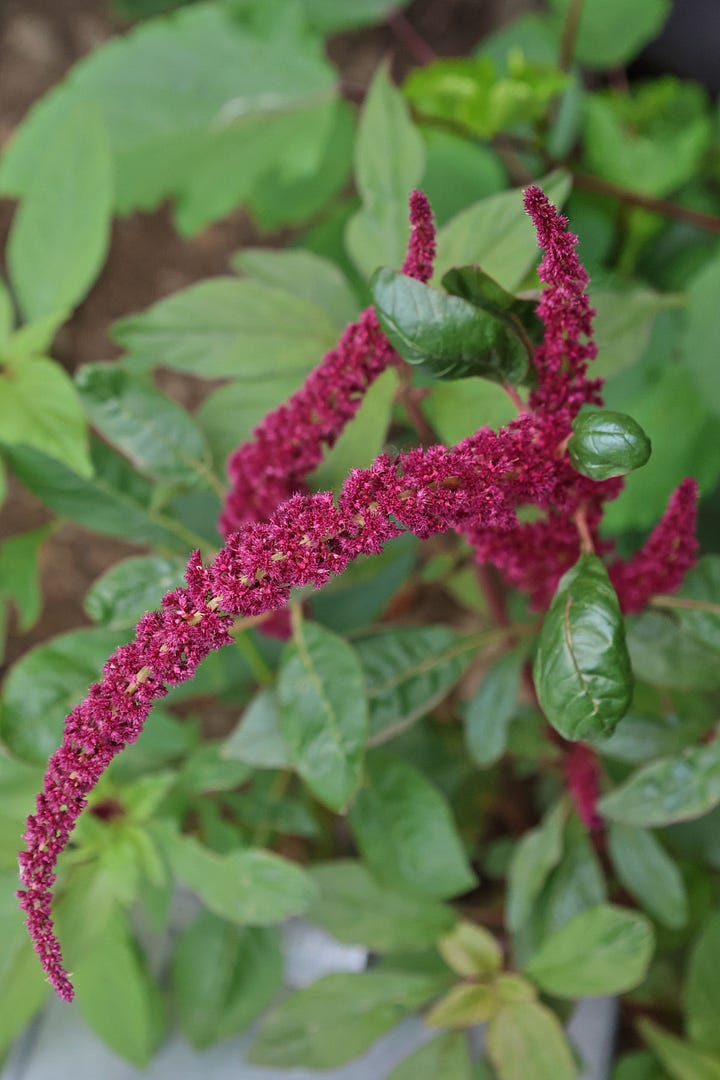

Amaranth has been a mixed blessing for me. I started growing several varieties of it last year. It’s a double crop, as both the leaves and seeds are edible. I had meant to only eat the greens, as I’ve been forewarned that if you let it go to seed, you’ll ALWAYS have amaranth in your garden.
And once again, I was too busy to prune the plants before they went to seed. And anyway, who wouldn’t want to try popped amaranth seeds, like a tiny new type of popcorn? So I sort of halfheartedly didn’t get around to pruning them, and of course I discovered that the adage is true. I have amaranth coming up everywhere!
But guess what? If you see the accidental 2 sisters part above, the teeming hordes of amaranth sprouts produced the tall supports that are happily supporting my pole beans. So although I fell behind again in the garden on this one, I’ll take it! And once this year’s seeds are ready to harvest, I need to try popping them.
Fennel flower
Here’s the flower from my Florence (bulbing vegetable-type) fennel. I also have the herb varieties, sweet fennel and bronze fennel. I need to check out and compare the flavor of the pollen from all 3 varieties, as it’s supposed to be fantastic in the kitchen.
🥬Herbs
Perennial herbs
Anise hyssop
If you like the flavor of anise, you can’t be without this herb! It’s easy (maybe too easy; it’s a real spreader in the mint family) to grow, has incredible flavor, and the bees love it.
Sage
I grow several varieties of sage every year, and this purple one is one of the most beautiful.
Oregano



Just like with chives, if you plant oregano, you’ll always have oregano. This delectable herb is a real workhorse in the garden. I love all of the varieties I’m growing, and so do the bees.
Mountain mint


I’ve never grown mountain mint before, and these 2 examples are among the 54 type of mint I’m growing this year. I need to get out there and start tasting and comparing. I’ve planted these 2 varieties directly in my herb garden along with my Corsican mint. These are the only ones I know of that don’t get too rascally and try to take over the planet if you let them. The other varieties are all of course in pots to prevent this.
Lavender

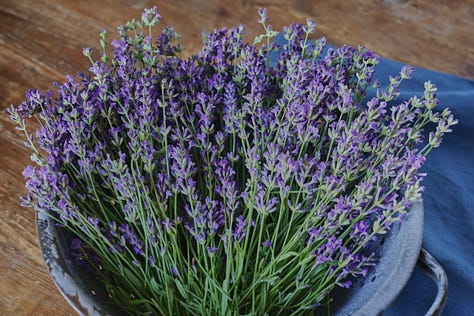
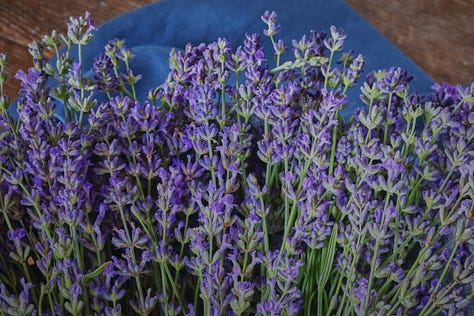
I adore lavender, and I’ve just planted a few new hedges of it from seed this year. They’re still tiny, and next year they should flower. The photos above are from some of my earlier plantings of existing varieties in the herb garden: ellagance pink, ellagance purple, hidcote, lady, and munstead.
Both last year and this year, I’ve made some homemade lavender liqueur. I’ll be sharing the recipe with you soon in an upcoming blog post, as well as a post for a captivating new cocktail I’ve created with this enchanting liqueur. Stay tuned for both of these upcoming posts!
Thyme

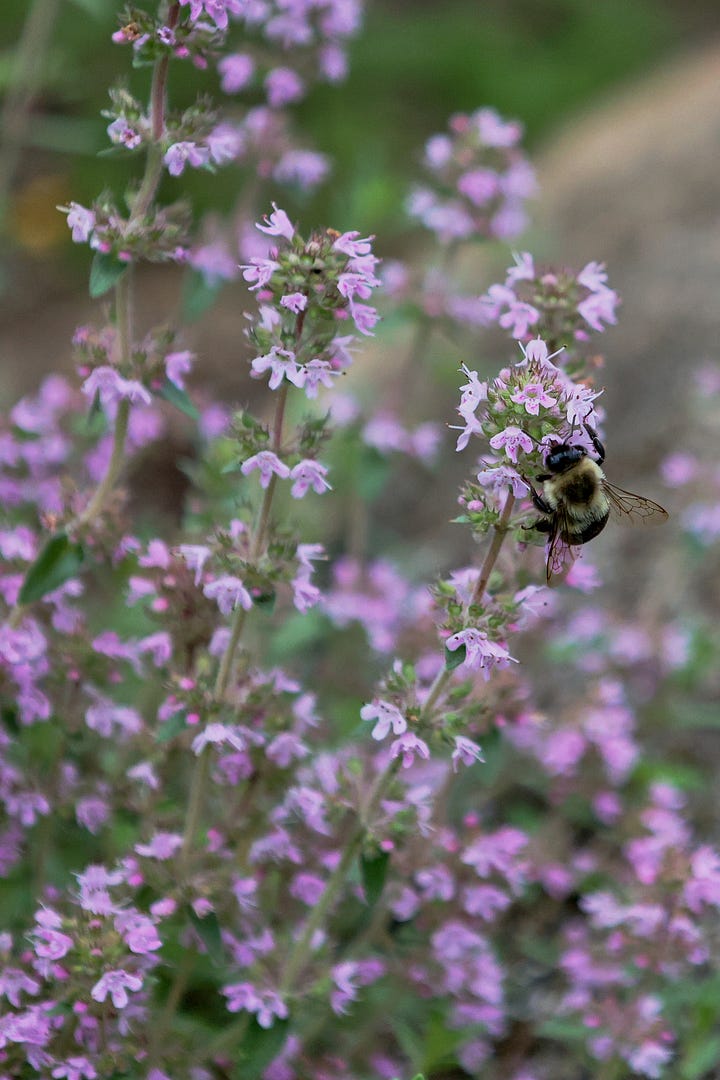
Most of the 18 thymes I’m growing this year are done flowering, but this rose petal variety is still going strong. I’ve planted a huge swath of both these and orange spice thyme along a long vertical wall of boulders on the side of our lawn.
They really do well in a rock garden, and they’re especially great to control erosion when the rocks are situated vertically with water runoff. I love to hear the comforting hum of the bees amongst my thyme flowers.
Watercress
This is the first year I’m growing watercress, and it’s really loving being in the dampest part of my garden. There’s always something good you can grow in just about any condition. Except in the freezing winters here in snowy Michigan. Sigh.
Biennial herbs
Parsley
These are the remnants of my poor flat-leaf Italian parsley after the deer have eaten it down to a nub. I don’t fence my herb garden, as the deer generally seem to avoid anything with a strong flavor.
There are new hoofprints in my garden every day, so I’m constantly reevaluating whether this is true. Most plants are left untouched. Last year I had to relocate my sorrel and bloody dock, which have a really strong and tangy taste. I was surprised that the deer chose to eat these!
And I guess it makes sense that they’d like to eat the mild-mannered parsley. Thankfully, it’s coming back. Poor guy. As a biennial, lasting just 2 years, I should put more in the ground each year. Just like with my angelica, this’ll keep me in constant supply.
In the bottom part of the photo above, you can see the tiny Corsican mint that I’m allowing to reseed and spread around in the herb garden. It never gets out of control (if you live in a warmer climate and it’s more invasive for you, please let me know!), it has such a strong minty fragrance that friends always gasp in surprise, and it’s adorable. Plus, I’ve planted it among my pavers in the middle of my herb garden, which I’ll show you in an upcoming blog post. It’s really thriving there! And when you can make your own homemade crème de menthe liqueur out of it, it’s a win-win to grow it!
Annual herbs
Basil

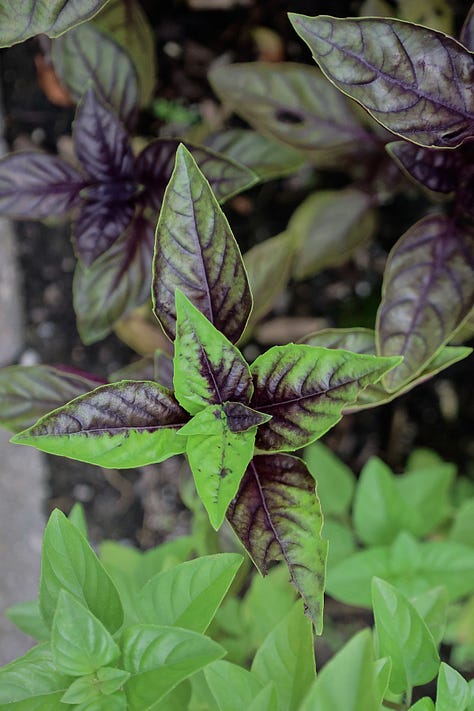
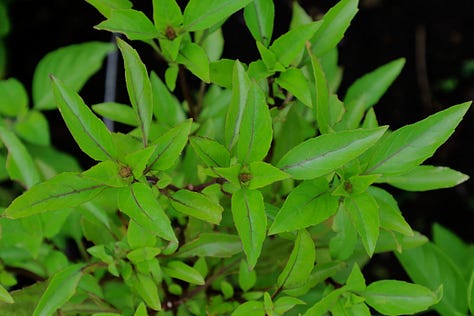
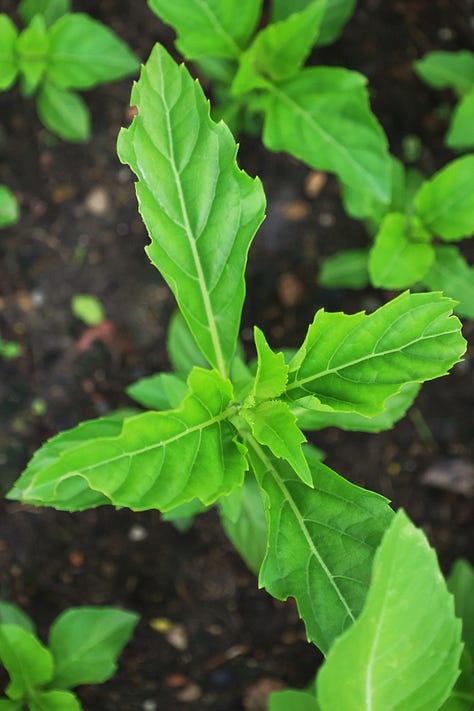
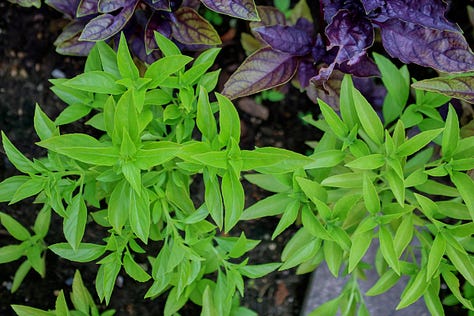
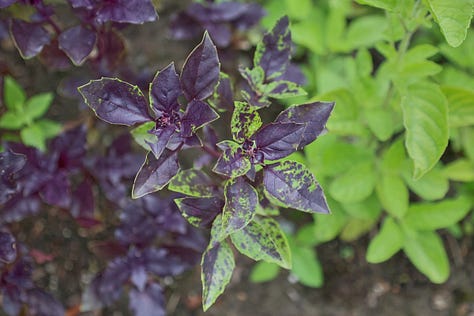


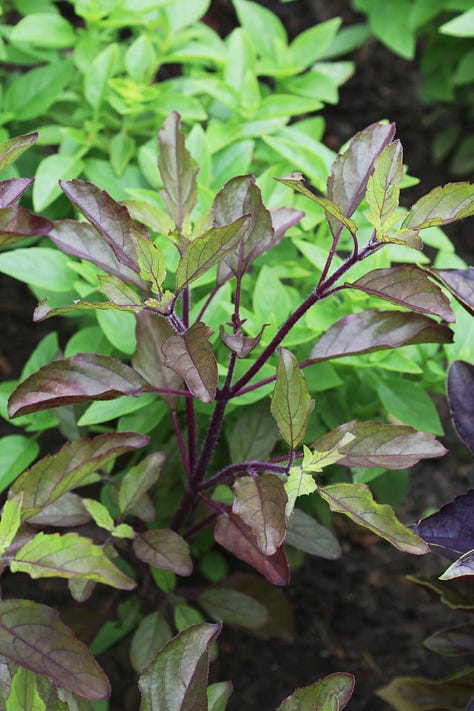

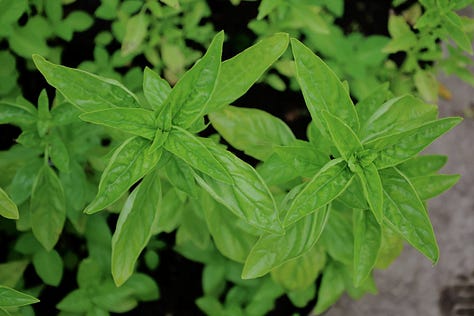
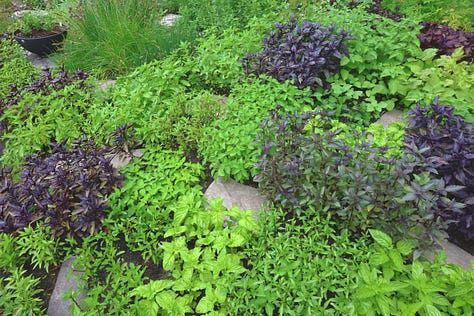
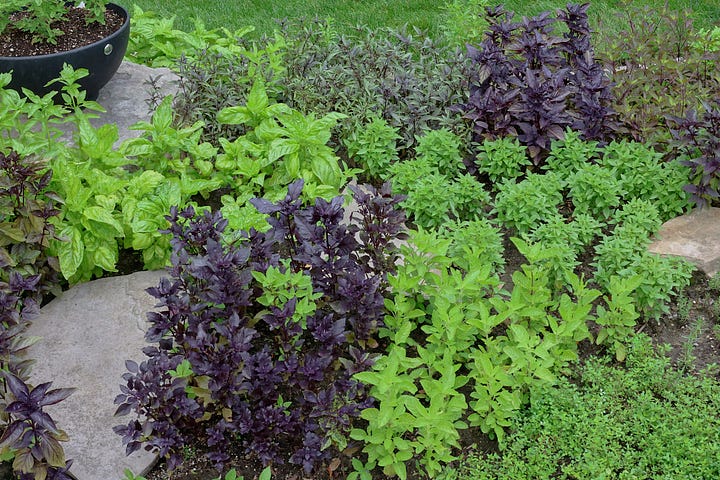


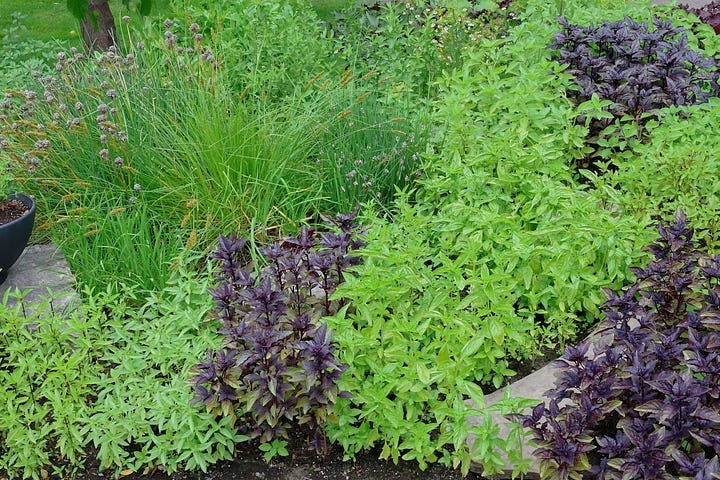
Thanks for humoring me with still more basil photos. It’s coming up like crazy! It’s one of my favorite gardening projects ever to grow so many different varieties from around the world (38 varieties last year and 45 separate ones this year) and to experience the distinct and spectacular characteristics each one has to offer.
I’m so fortunate to experience these wonderful herbs in the garden each year. It’s going to be so much fun to get out in the garden this week and start documenting the scents and flavors of this year’s batch.
Local friends, you know I’ll need more tasters this year! Your input is always priceless.
Shiso

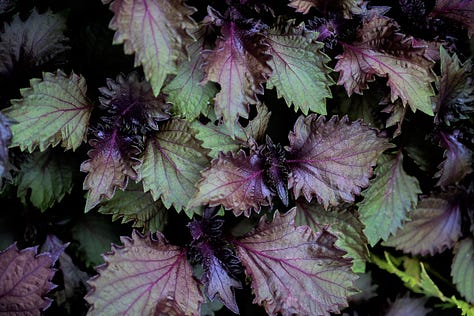
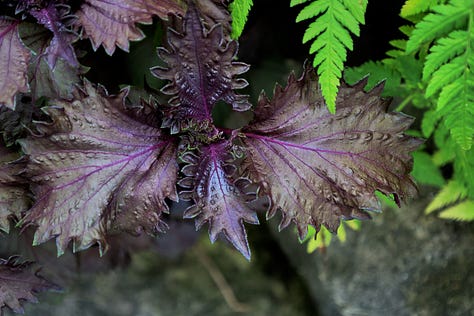

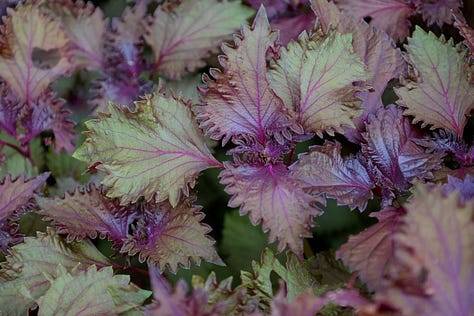
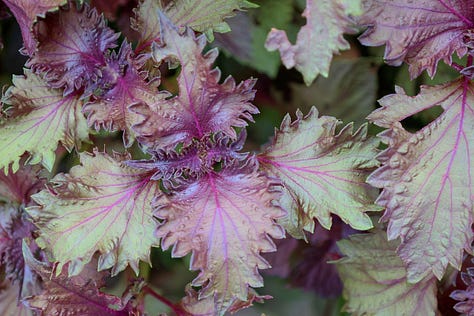
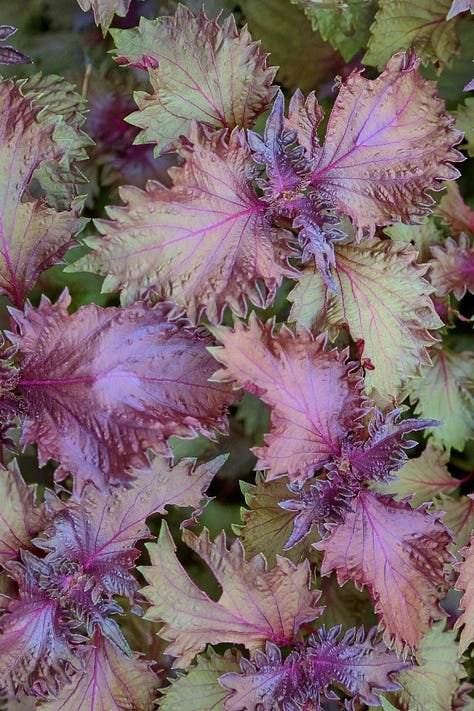

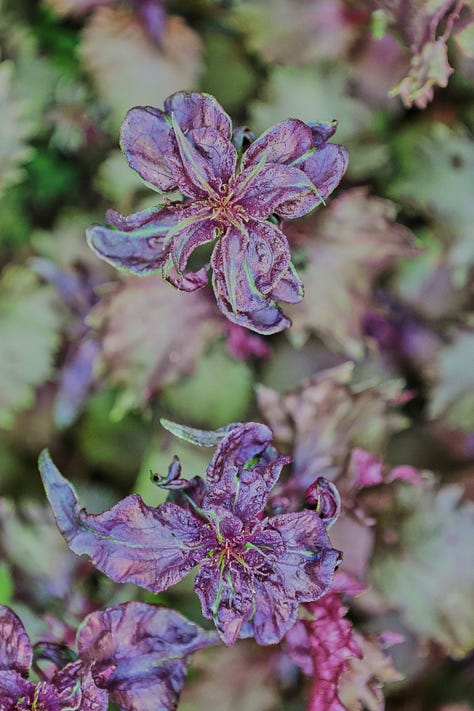
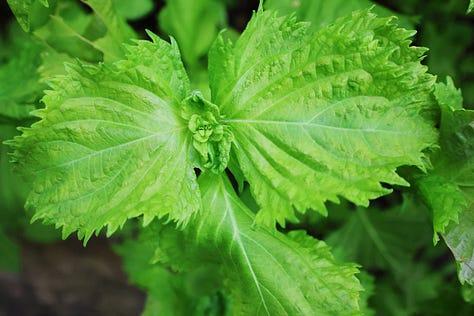
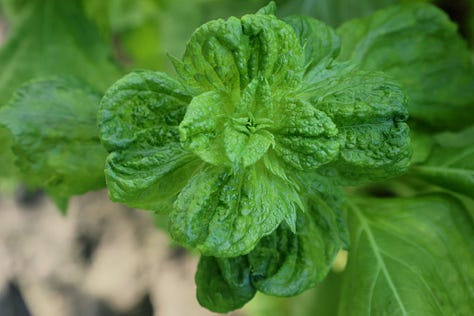
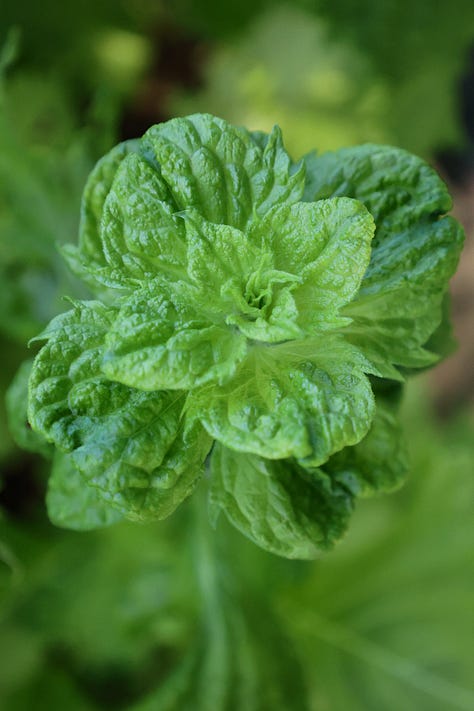

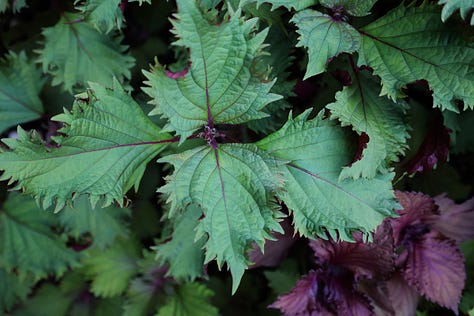

I really, really love shiso. If you’re not growing this annual herb in the mint family (Lamiaceae), it’s a must! This herb is enjoyed in several Asian cuisines, including those of Japan, Vietnam, and Korea. I just adore it!
Shiso has flavors of cumin, cinnamon, earthiness, and sometimes citrus. There are so many ways to use it. I have several recipe posts coming up using this precious herb. Each variety has its own unique and enjoyable aromas and flavors. It’s really one of my favorites.
Culinary marigolds




These little gems are so fragrant! Like the with papalo, huacatay, and quillquiña below, the delightful scent wafts toward you as you approach.
Herbs from Latin America
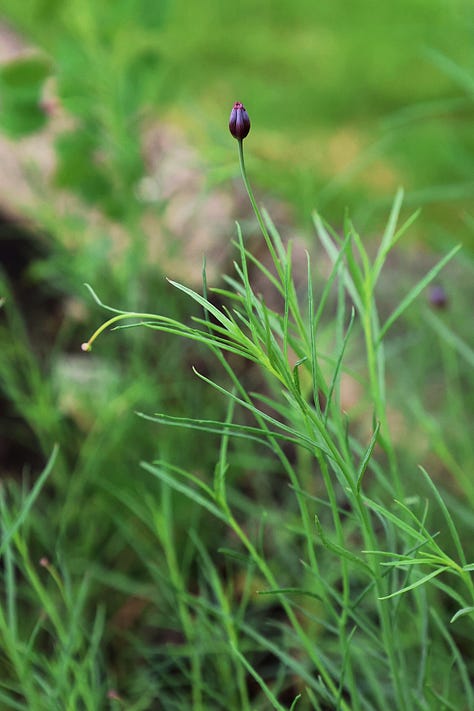
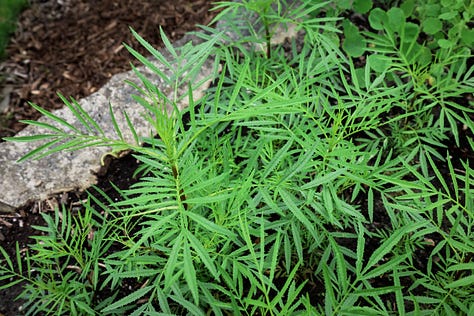

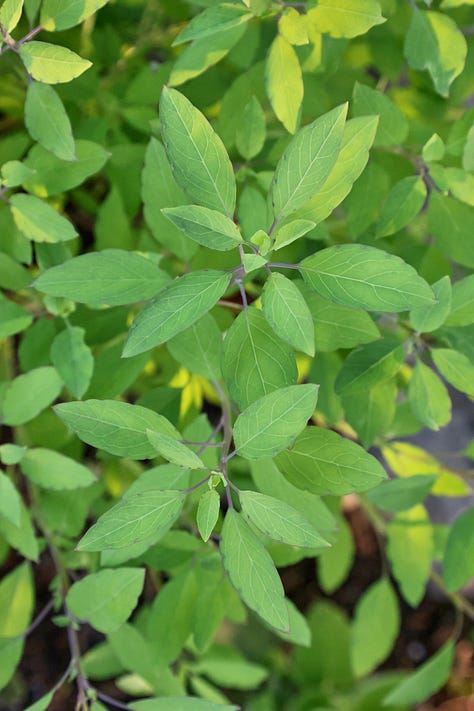
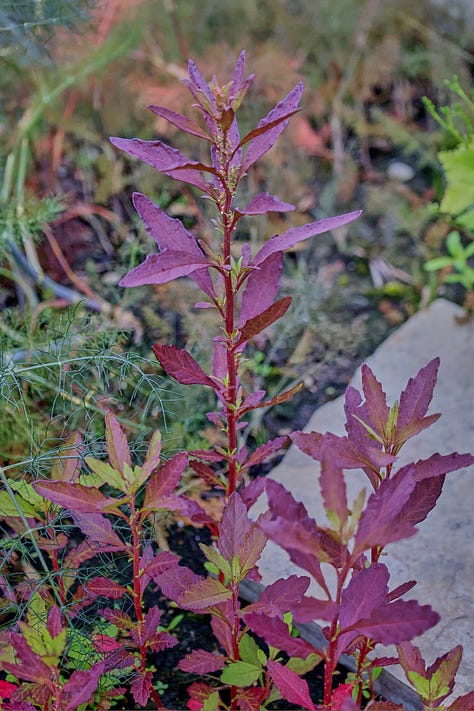
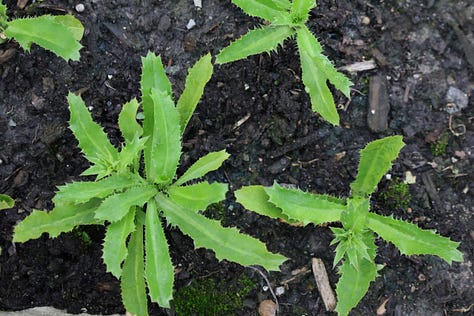
I’m really looking forward to introducing you in more detail to these herbal treasures in upcoming posts. And these are only a few of the herbs in the garden. There are many more of them to come. Sigh, this is why I garden. Pure culinary delight.
Herbs from Asia

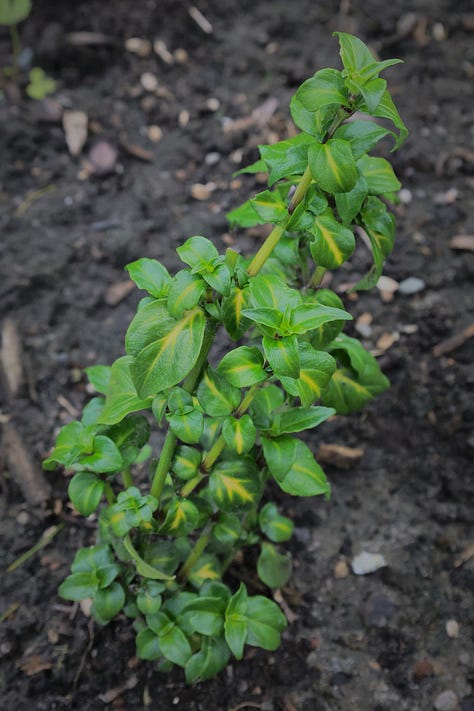
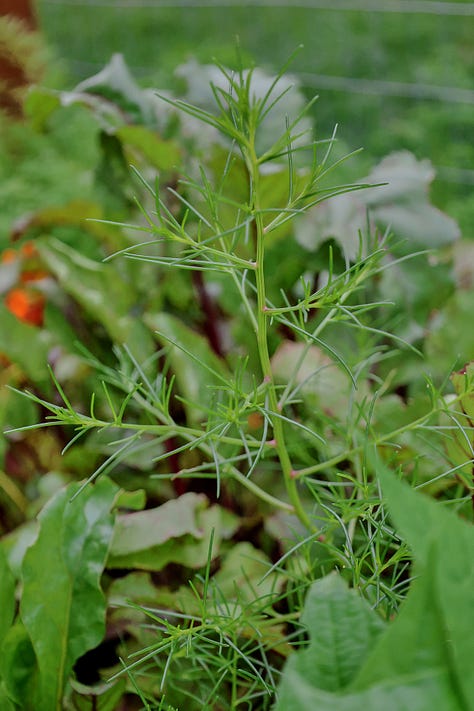
And here’s yet more herbaceous joy from around the world.
Herbs from the Middle East

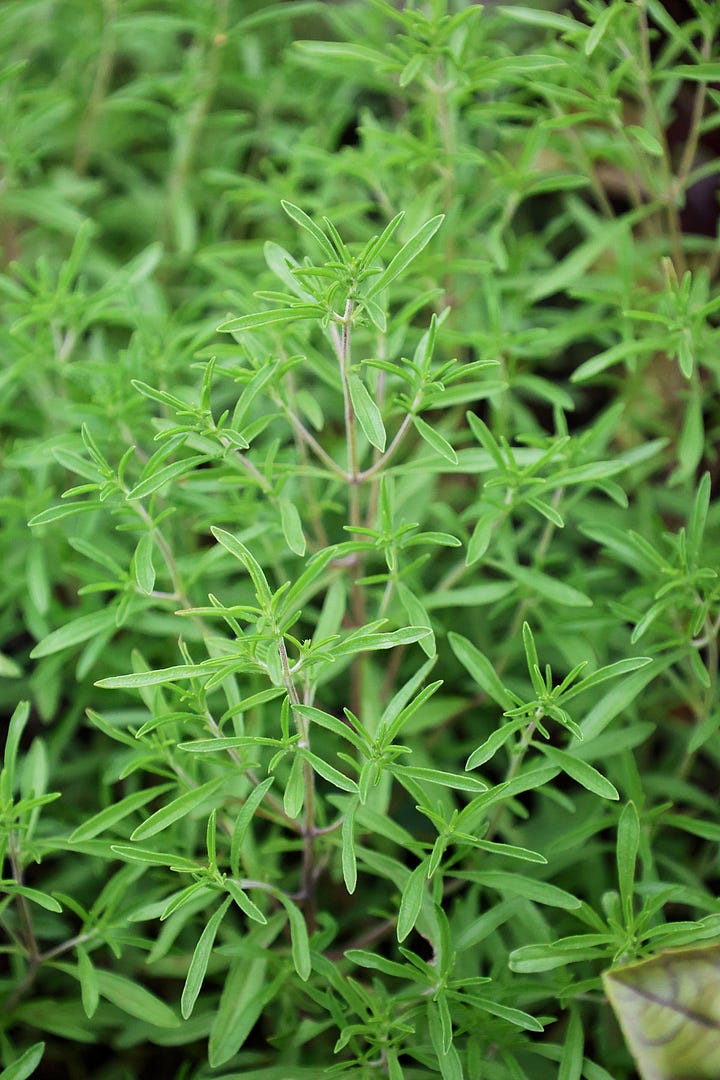
I love to make my own za’atar spice blend from these and other traditional Middle Eastern varieties of herbs in the garden. It’s so unbelievably fresh and flavorful.
More annual herbs
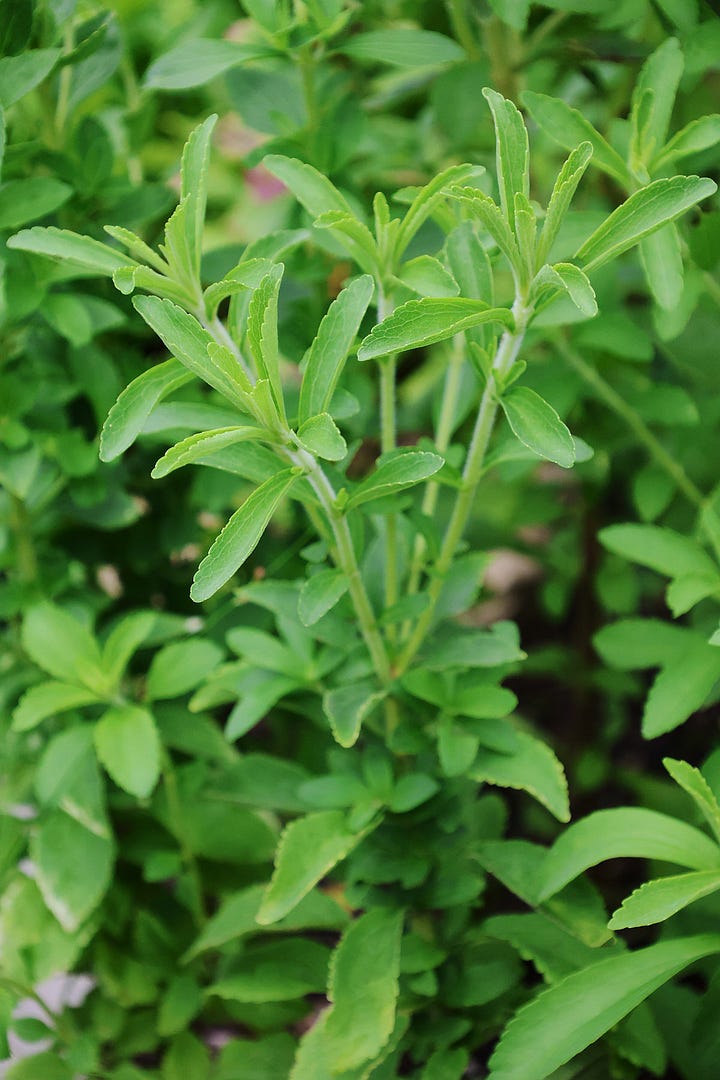

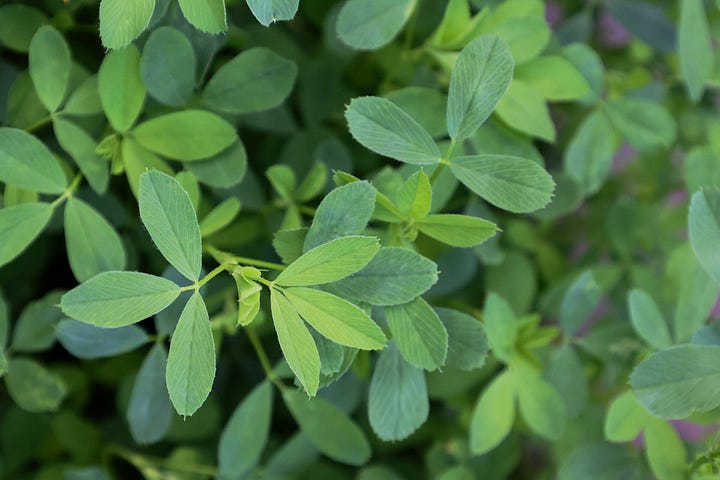

There will never be a limit to the global herbs I need to grow and experience. But of course, I’ll try. For me, this is the most thrilling of goals!
Flowers
Perennial flowers
Salvia



Bee balm / bergamot
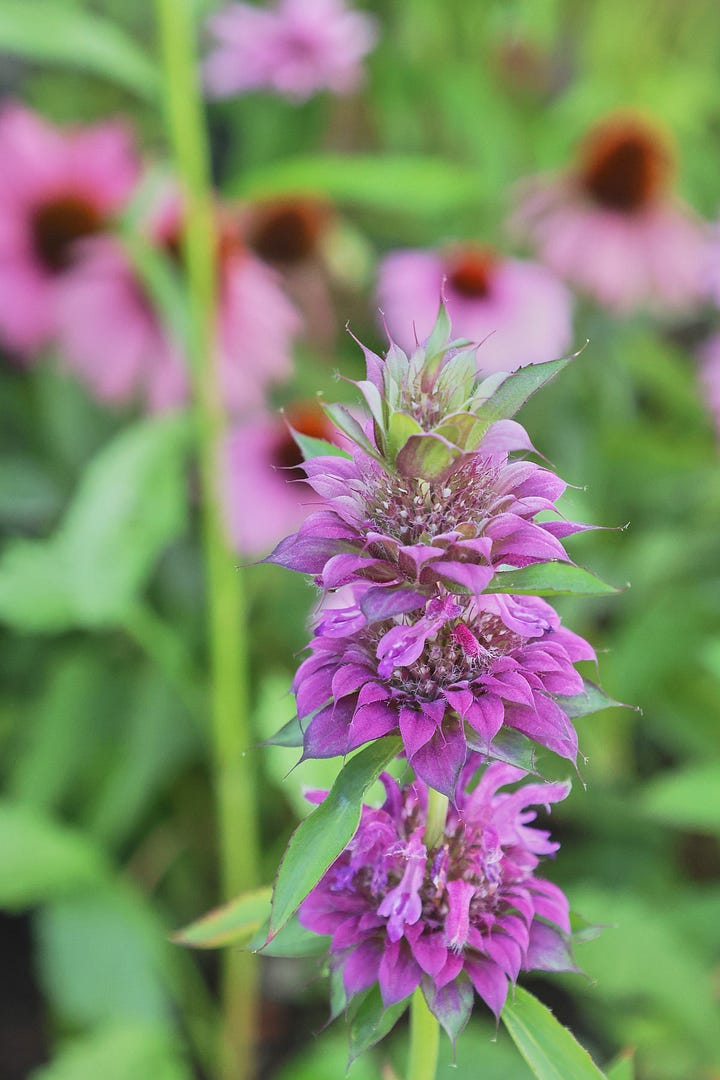

Hydrangea
I’m not sure which variety of hydrangea this is, although it’s a classic mophead type. The reason it’s special to me is that when I created my herb garden, among the tons of plants to move out of the way was a small, lone hydrangea shrub. As I was redoing the landscaping around our new house, I really needed more shrubs and other perennials plant there.
So I took this little hydrangea plant and divided the roots into 7 separate plants. And this year, 3 years later, it’s finally flowering! All 7 plants have survived. Dividing perennials is such a worthwhile endeavor to create multitudes of free plants for the garden.
Echinacea


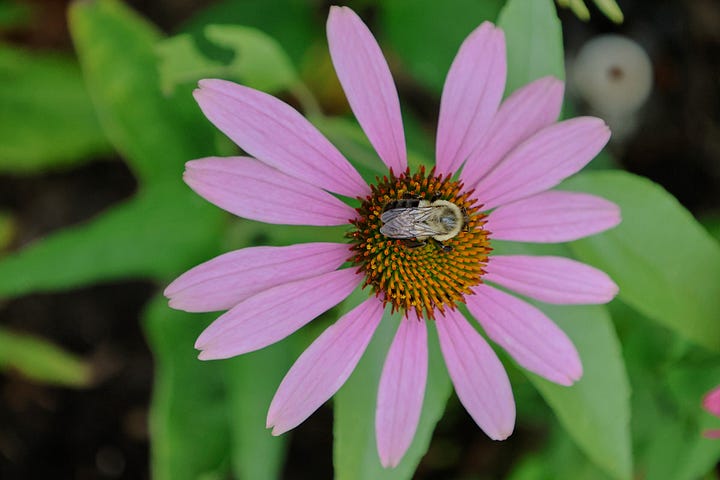

I’m going to spare you guys a further glut of garden commentary, as I’m not sure whether you’d survive it. Please enjoy the flowers that I adore in these photos from my garden. (The bee in the echinacea photos above was sleeping. So sweet!) All of the flowers, with the exception of the morning glories in an earlier post and the sweet peas (included below) are edible. I’m going to get out in the garden this week and taste them. But it’ll be so hard to chew on these beauties! I’ll keep you guys posted.
Phlox
Annual flowers
Snapdragons


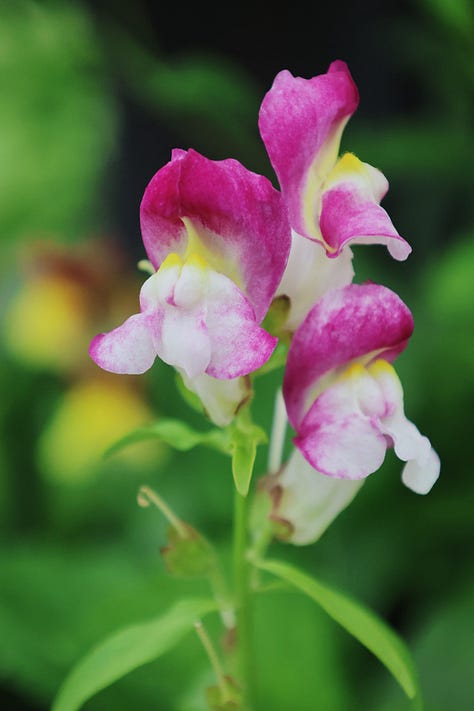

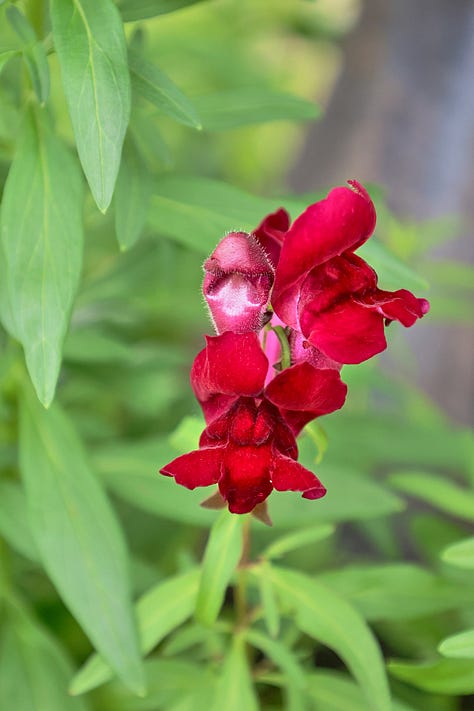



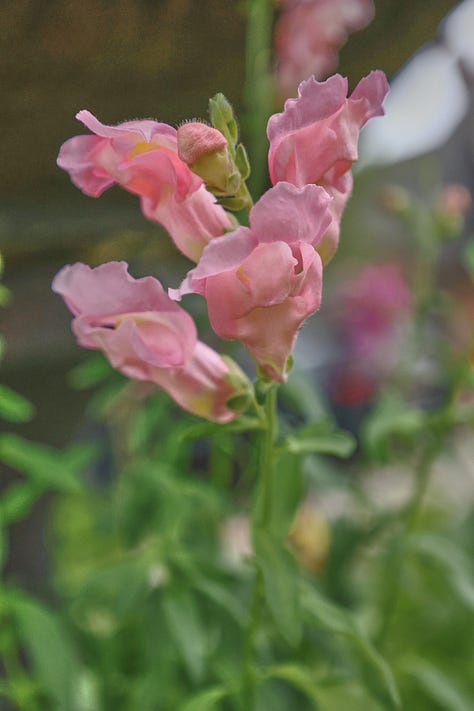



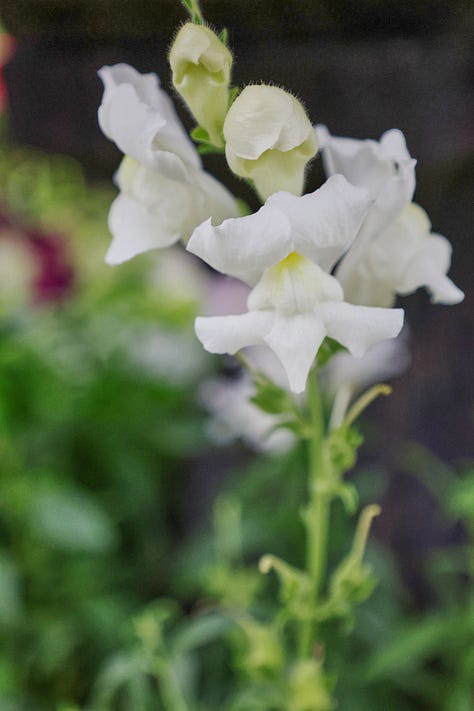


Cosmos

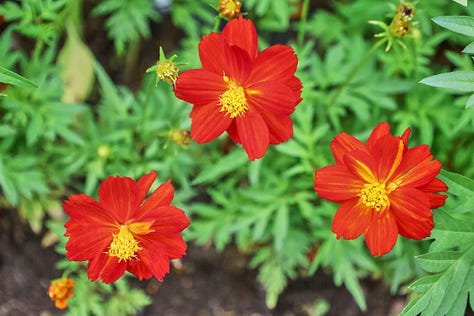

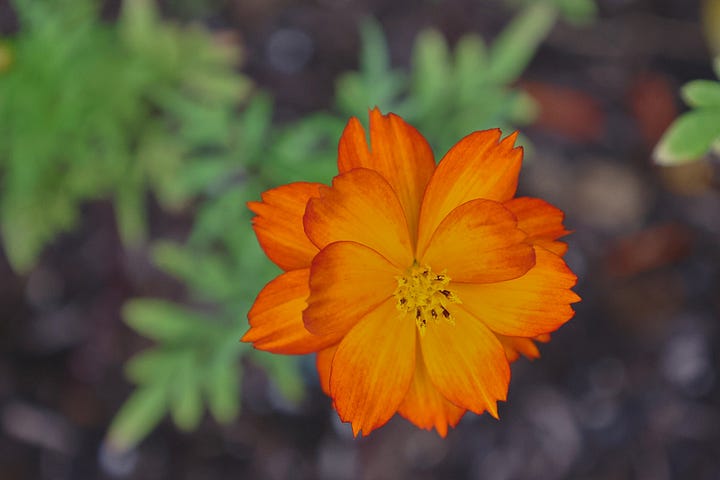
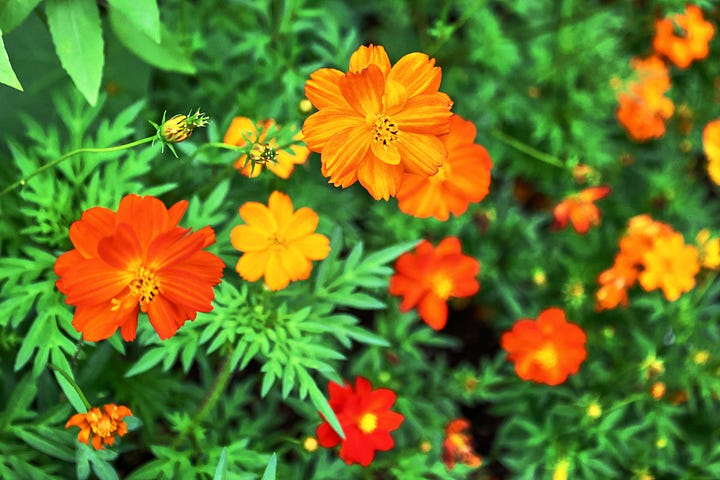
Cornflower / bachelor’s button
Celosia / cockscomb


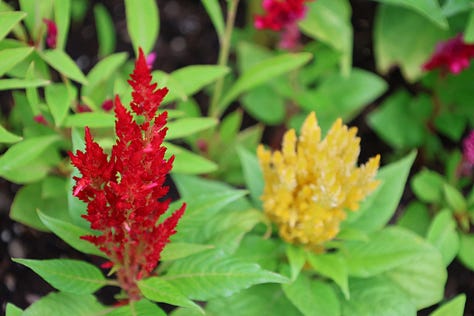

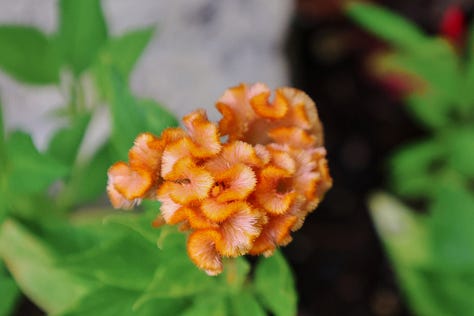
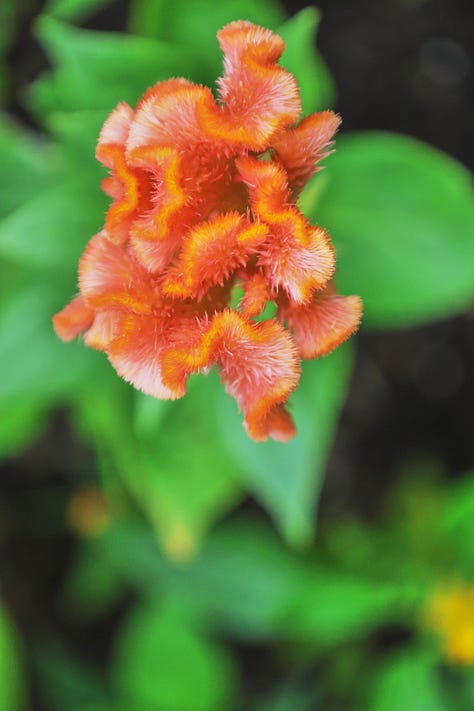
Sweet peas



Petunia
Fruit
Gooseberry
I’m so happy to be growing fruit this year! I remember picking gooseberries at my grandparents’ house when I was little, dodging the huge thorns to enjoy the treasure of delectable berries.
Along with a few types of gooseberries, this year I’ve also planted some blackberries, jostaberries, and pink, red, white, and black currants. Someday I hope to have a large enough currant harvest to make my own Johannisbeersaft-Schorle (black currant juice mixed with sparkling water) like we loved when we lived in southwest Germany.
And of course, with my husband Cyril being from Burgundy, France, we really enjoy a great crème de cassis (black currant liqueur) to make a refreshing and delicious kir or kir royale (a kir with champagne in place of white wine).
It would be amazing if I could make my own homemade crème de cassis someday, just as my husband’s grandmother did on the family farm in St. Aubin, in the Saône-et-Loire department in Burgundy. There are so many special historical and family traditions that are so worth our while to keep going and share with family and friends.
⭐ 10 gold stars for you!
If you’ve muscled your way through this to the end, I’m forever grateful. I love having you here with me on these garden escapades. Thanks so much for being here! If you haven’t already subscribed, please enter your email address below to get to more free newsletters and blog posts directly in your inbox.
And please check out my blog Shovel and Crunch, and follow my social media pages. And sharing with others is most welcome. Thanks!❤️
🌱Shell



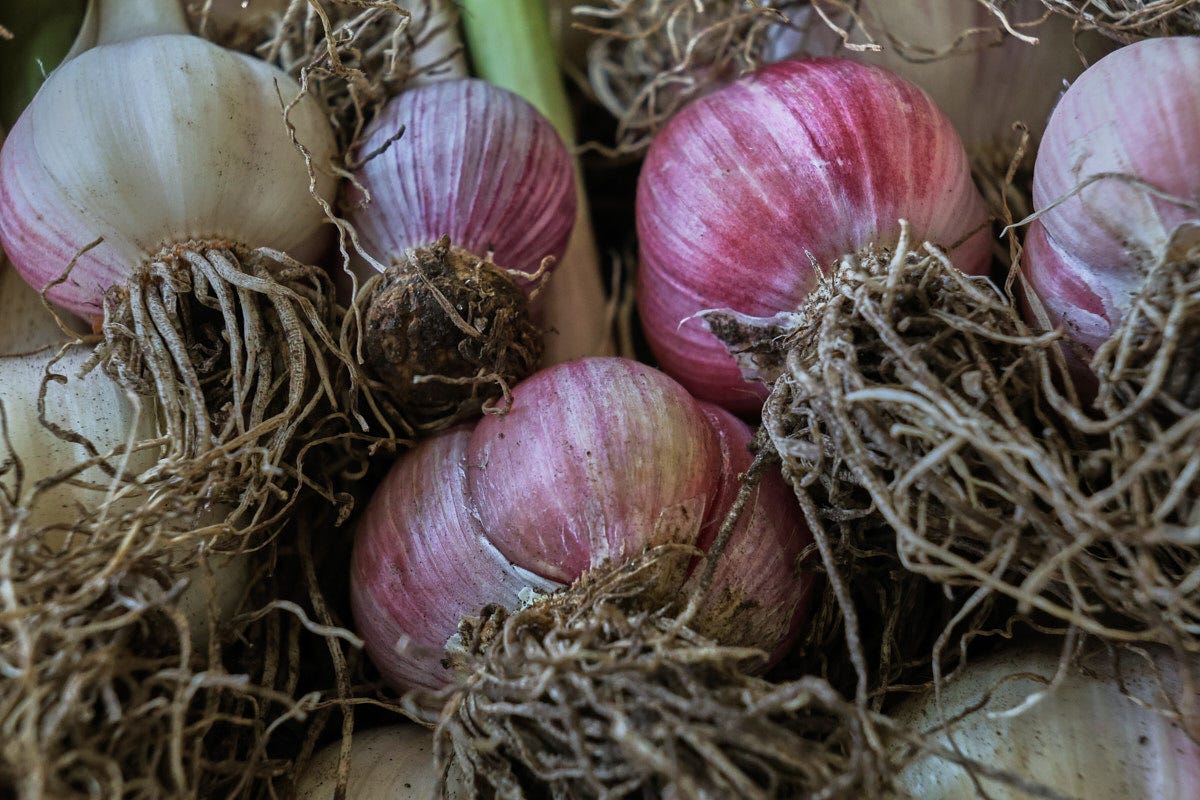
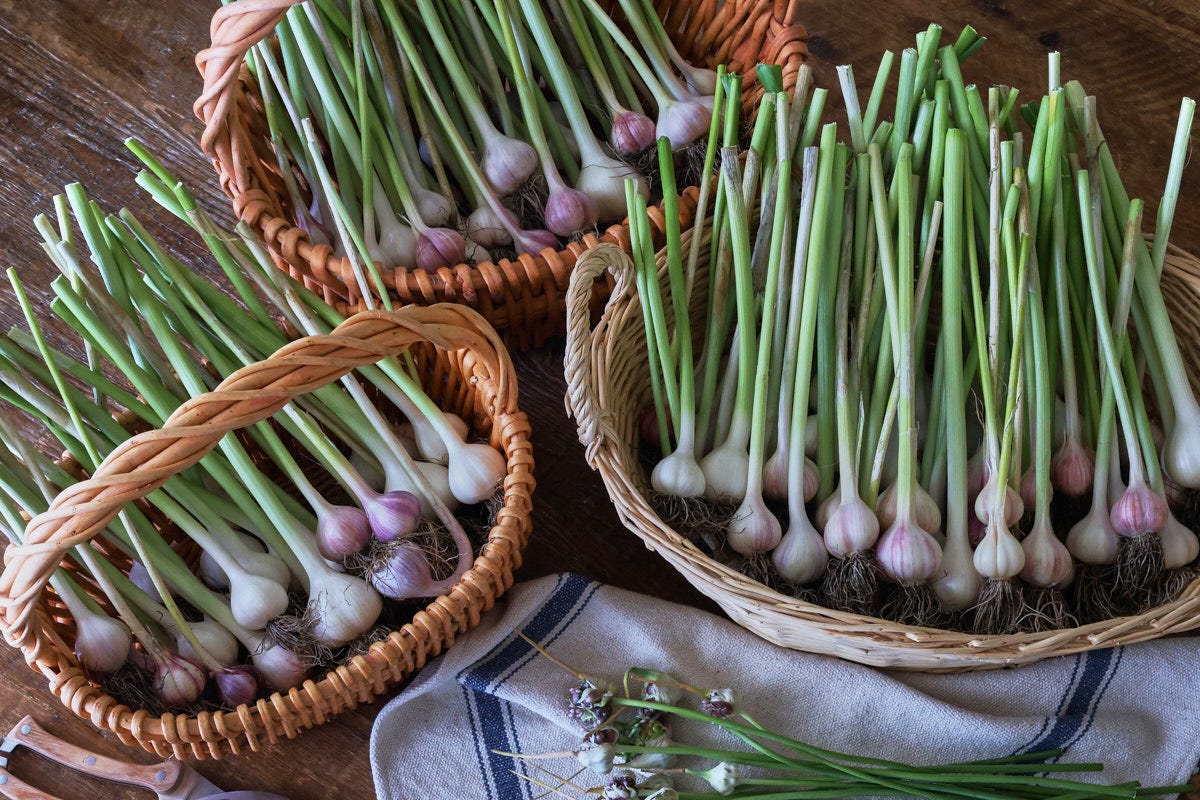
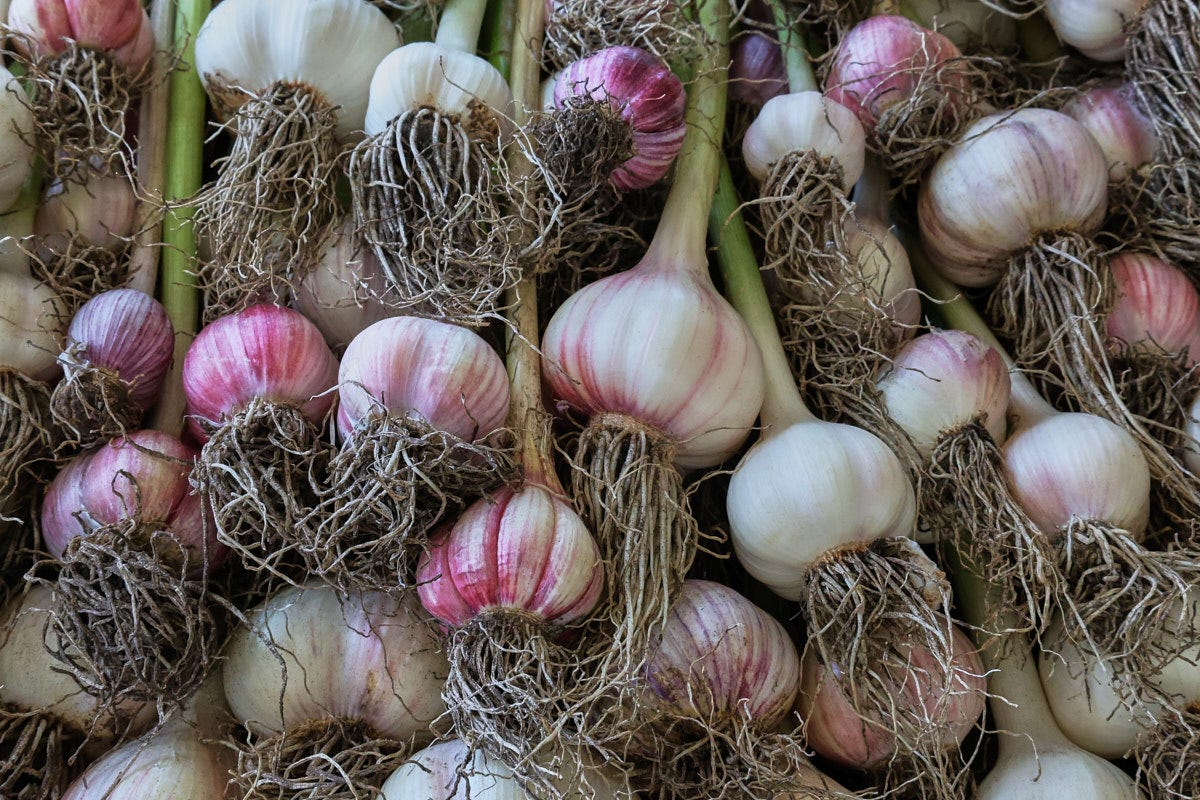
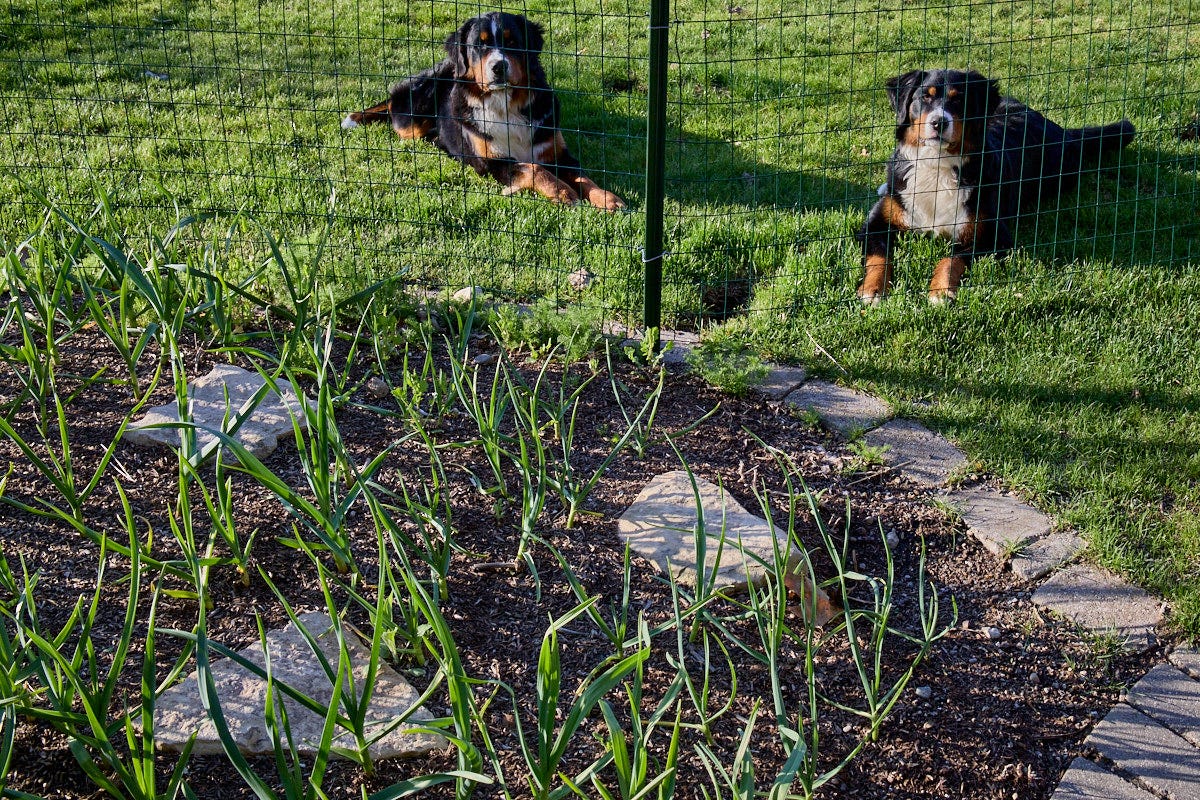


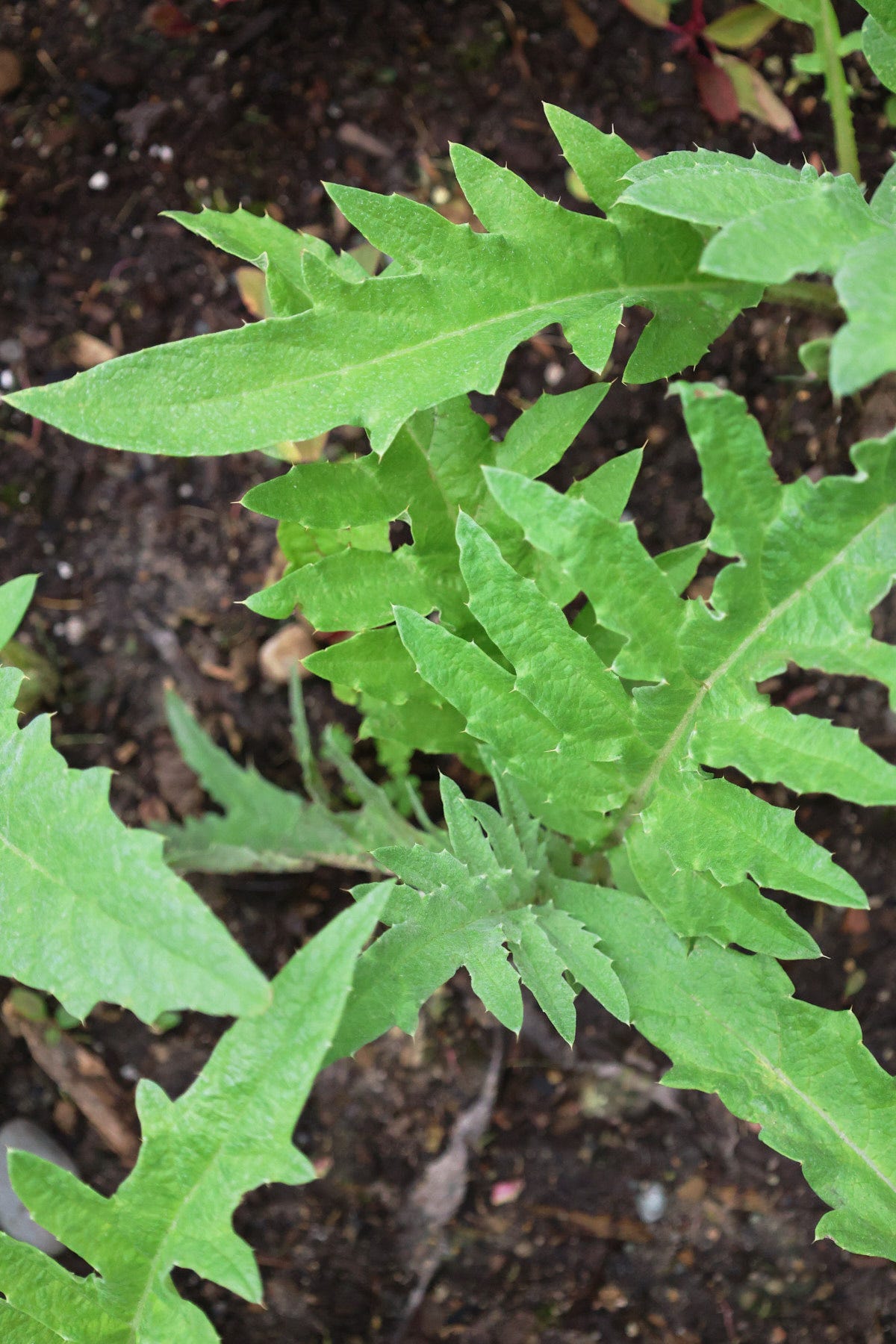
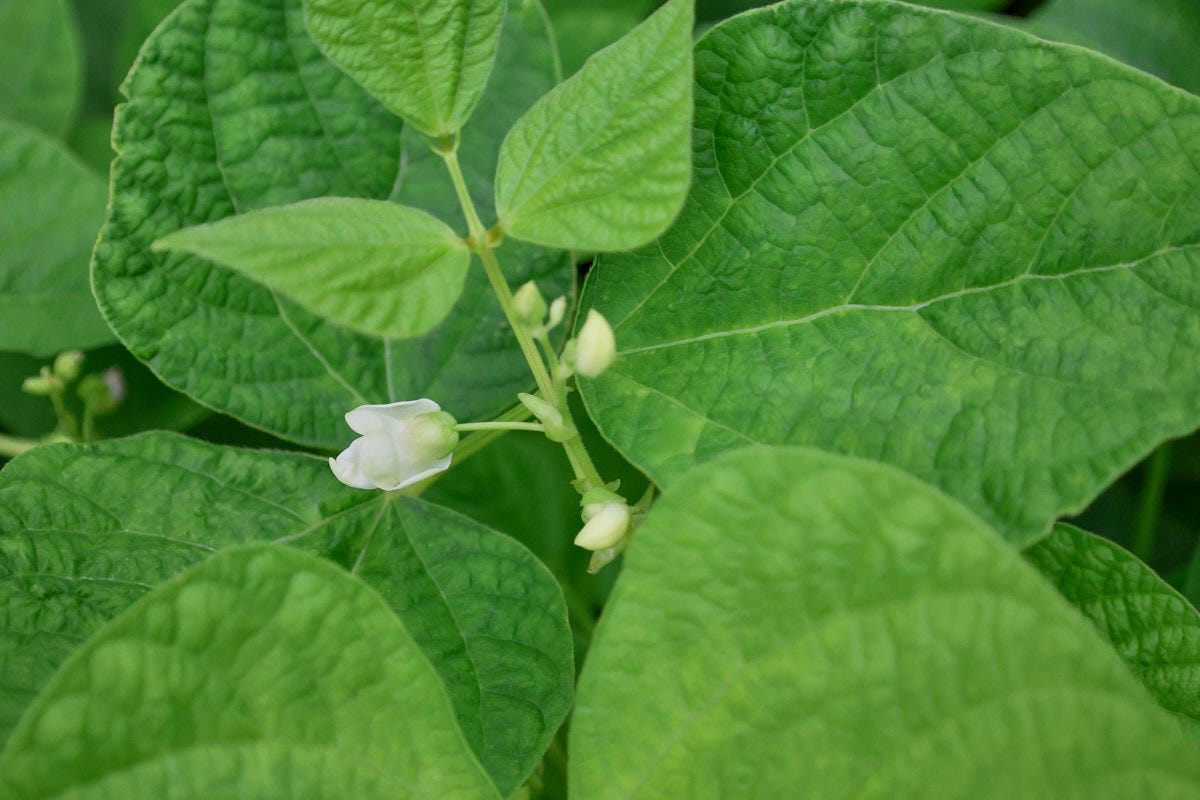
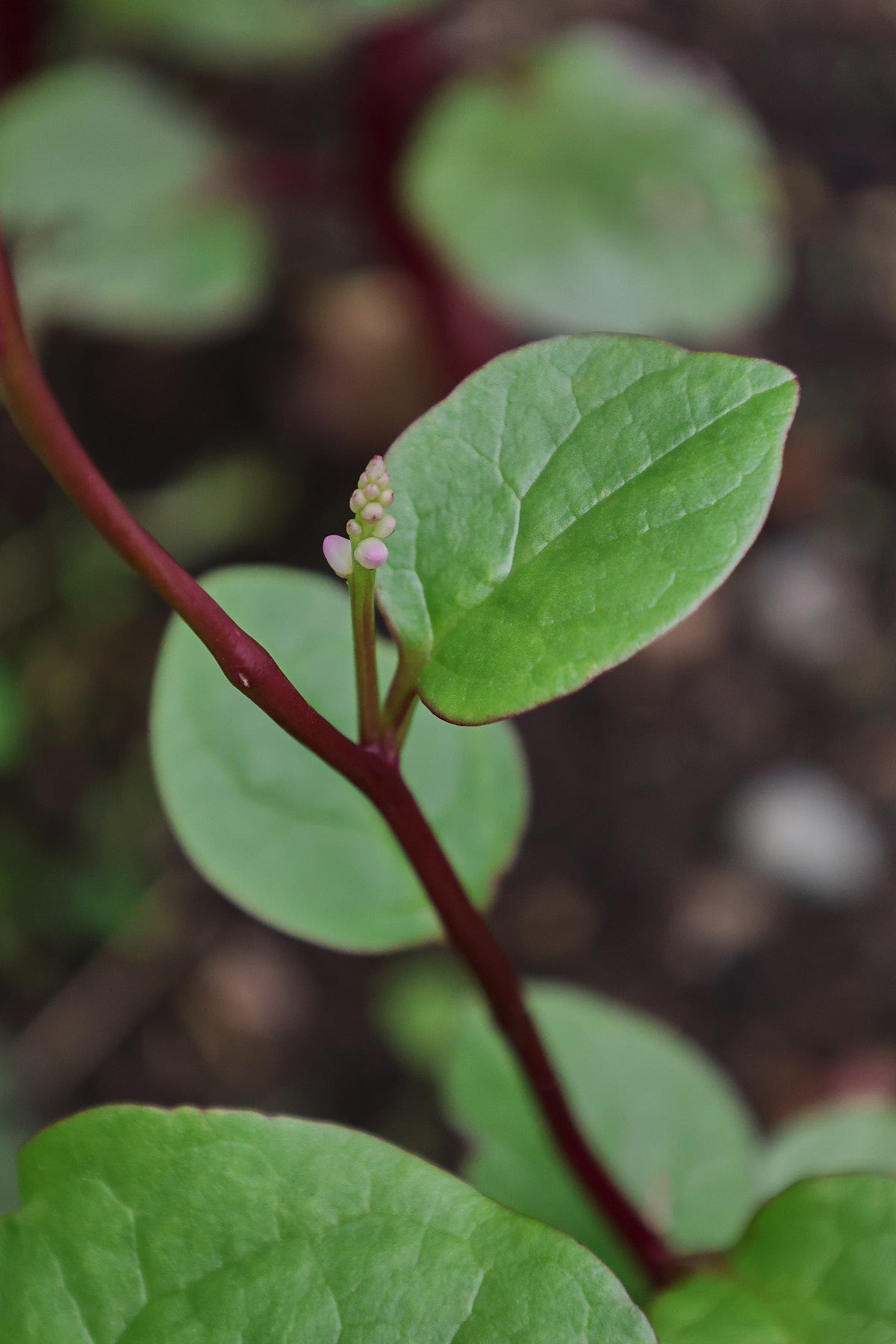
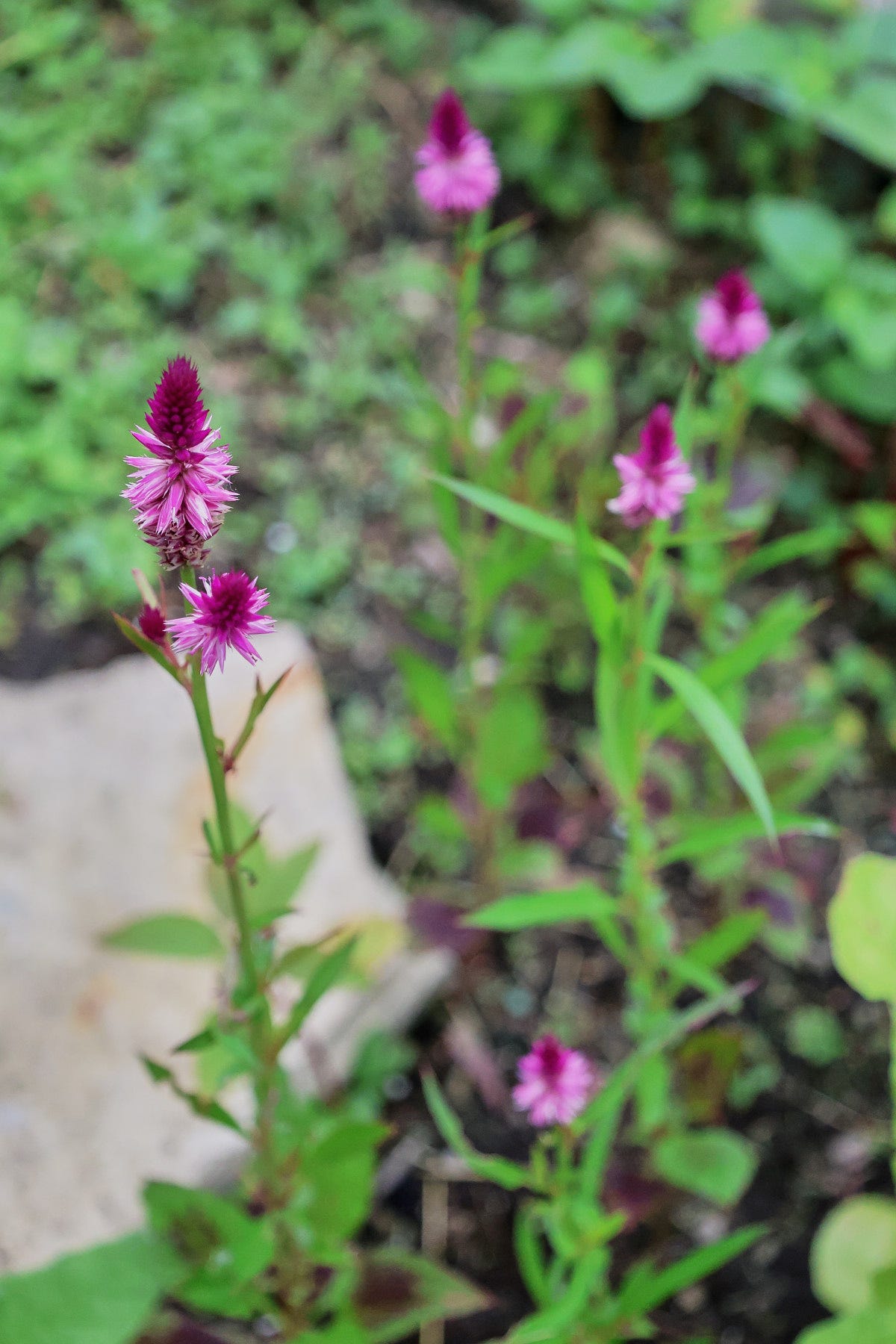
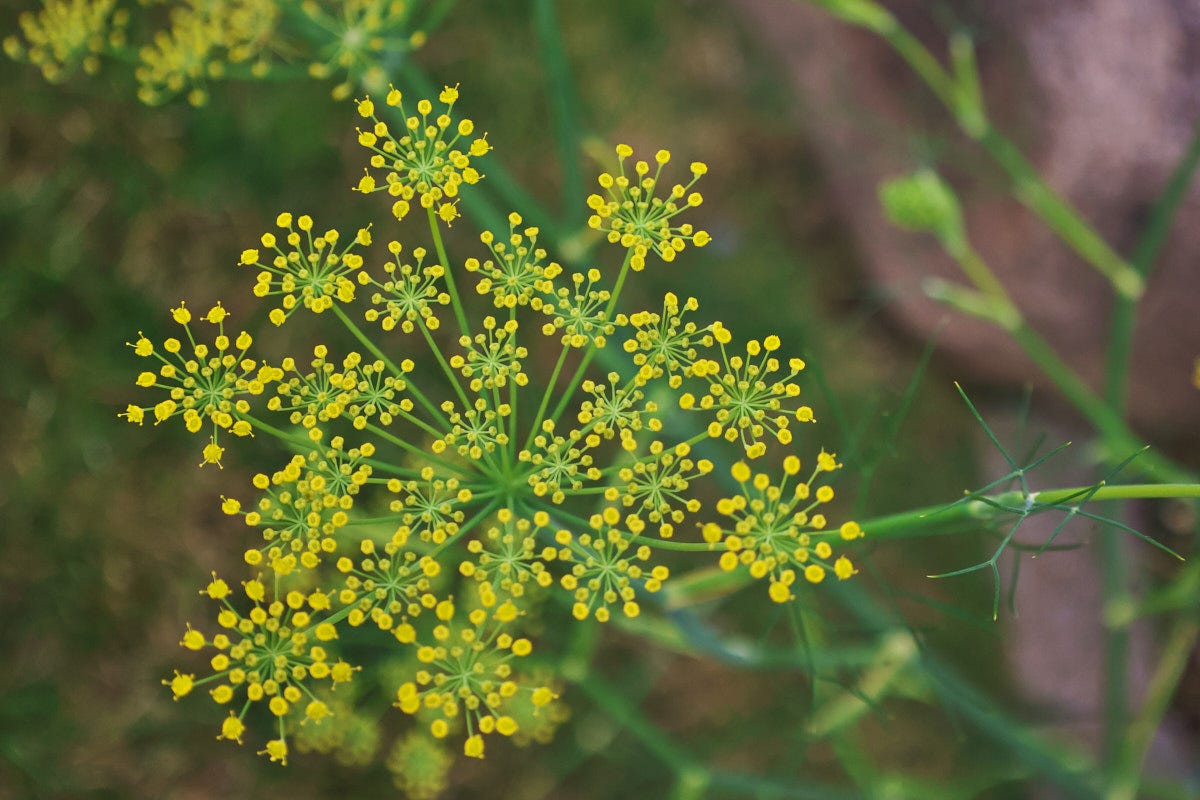
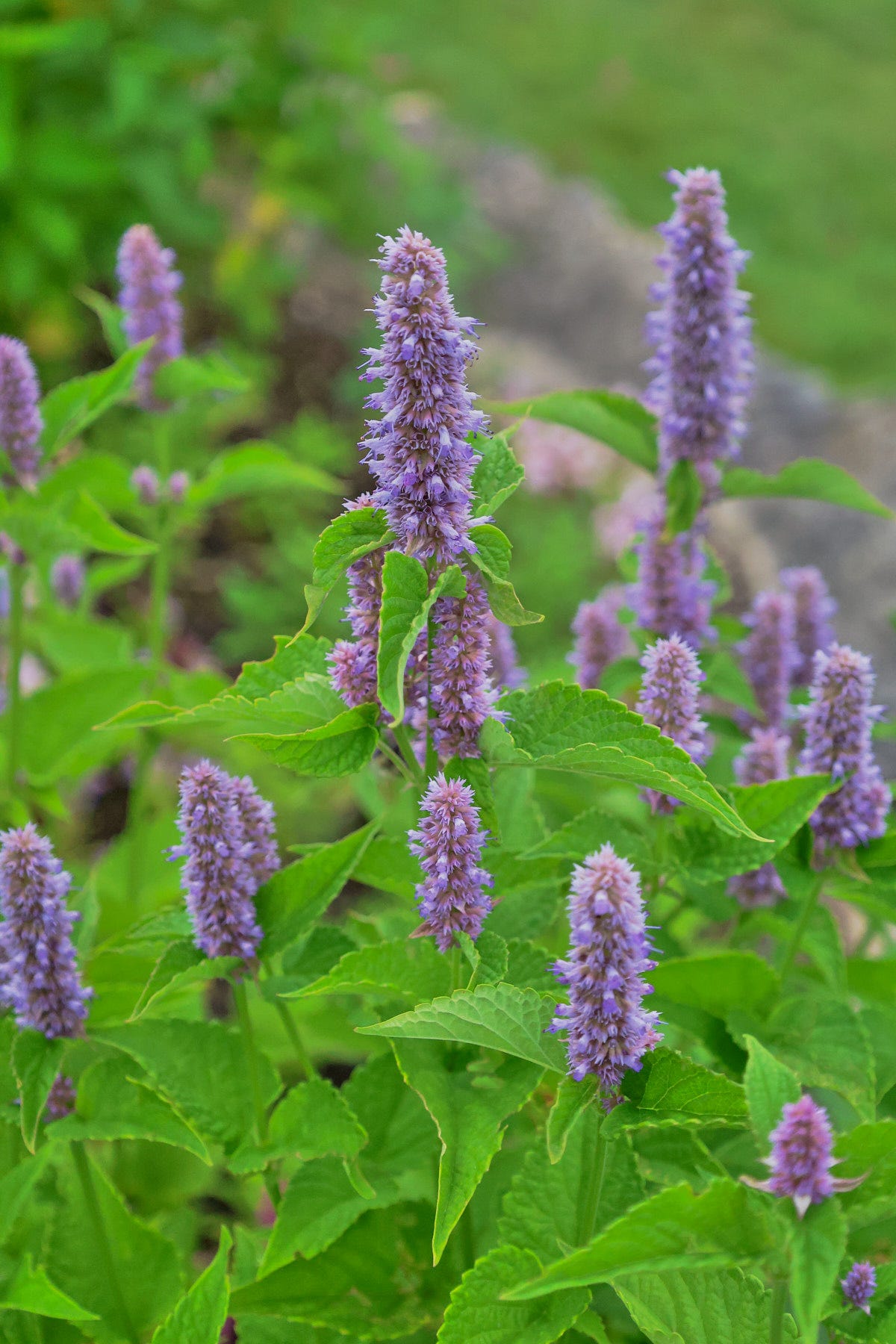
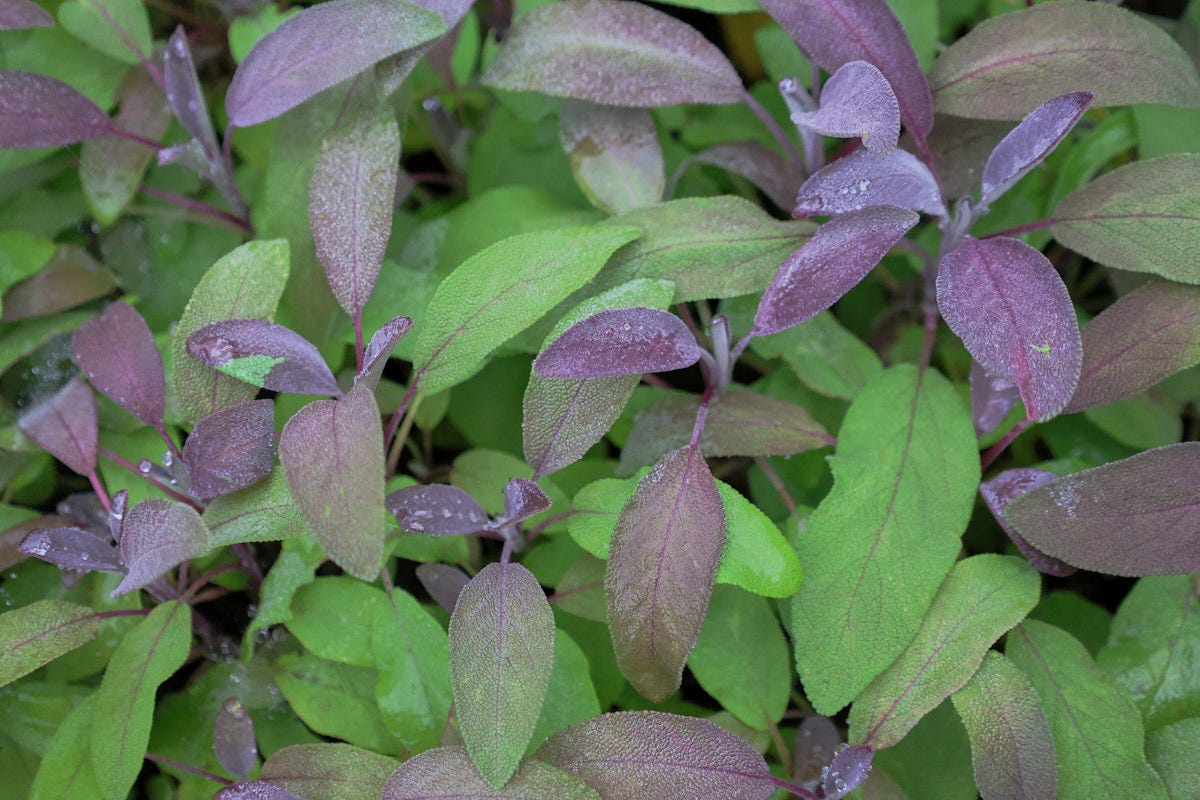
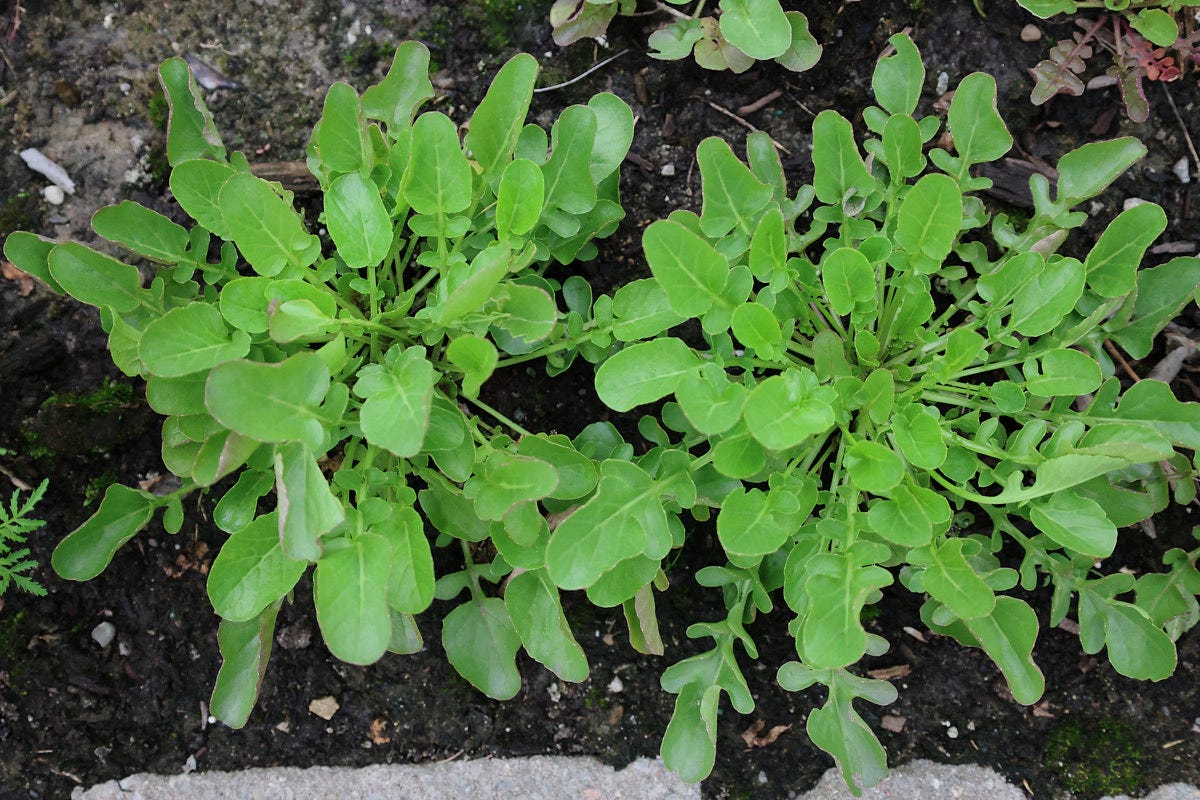
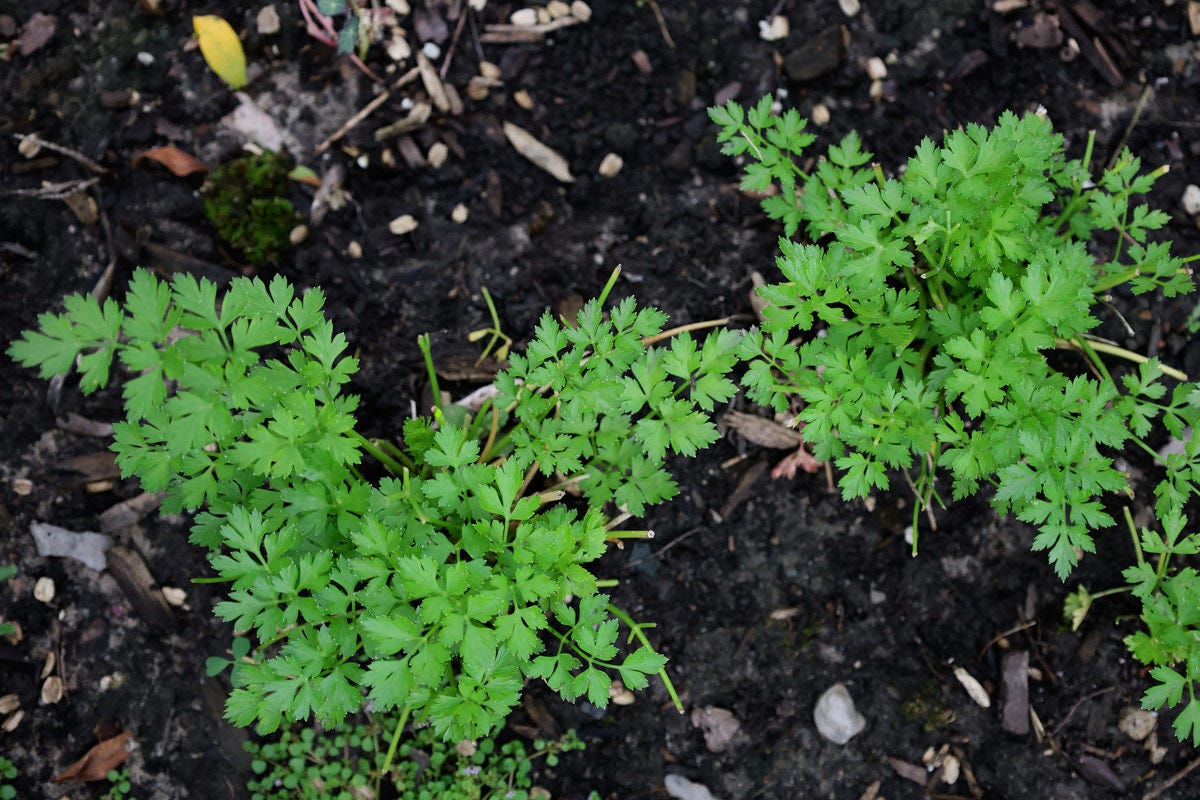
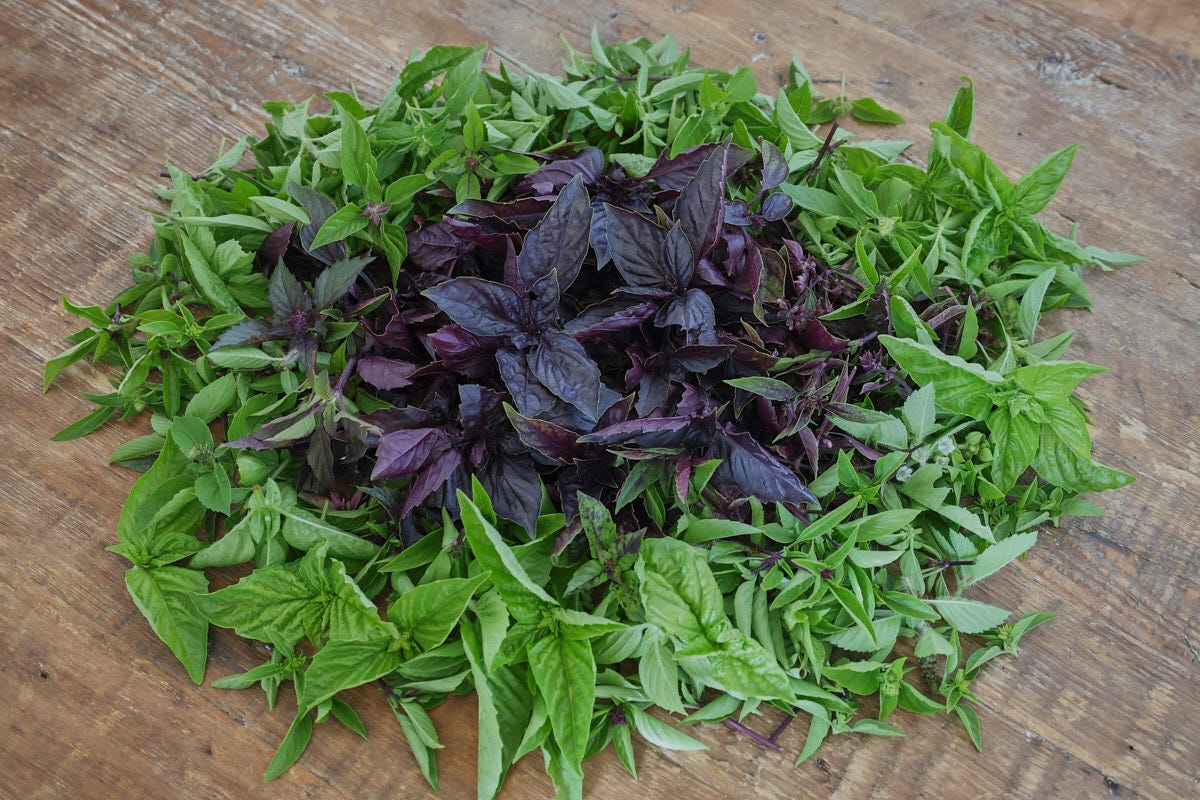

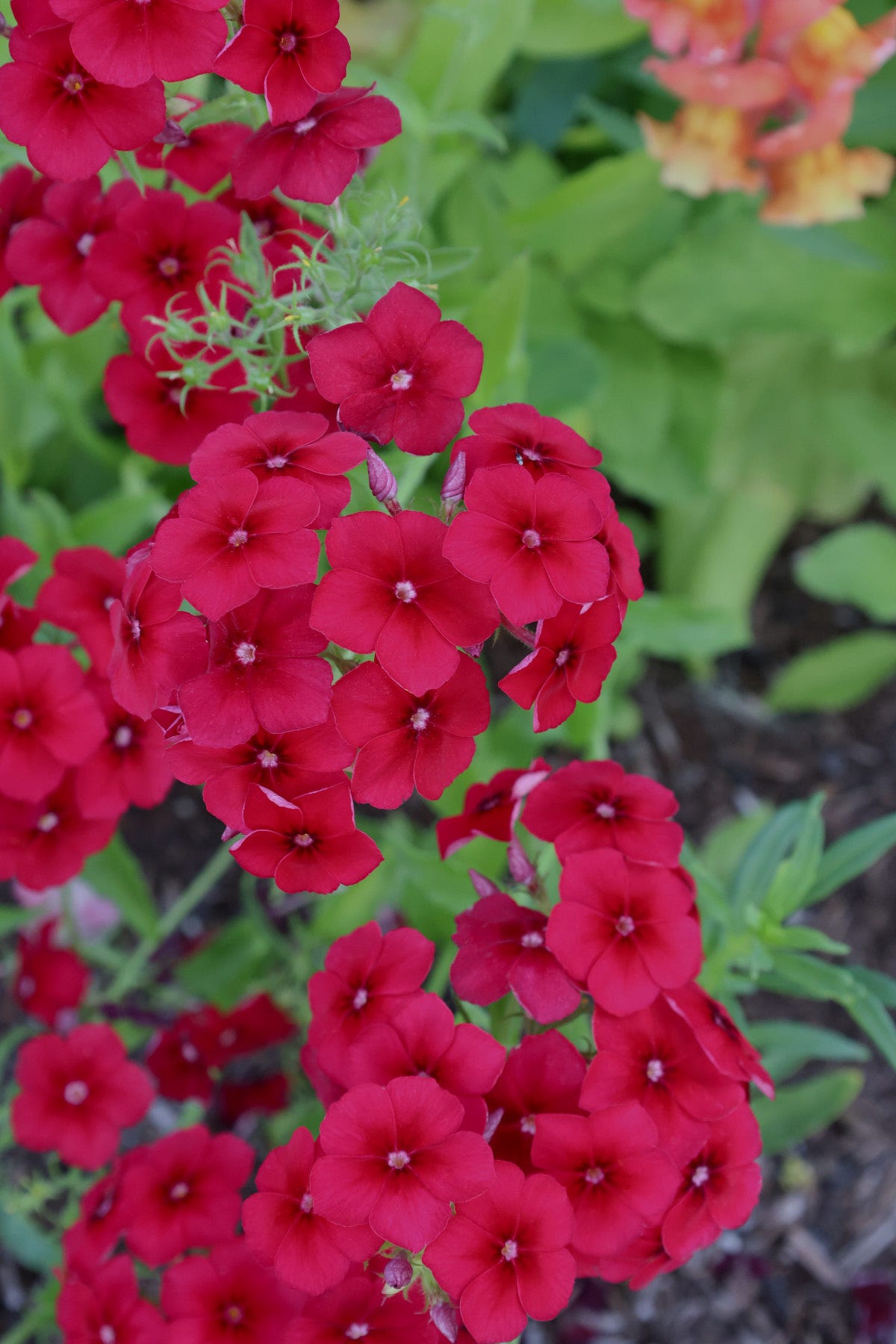
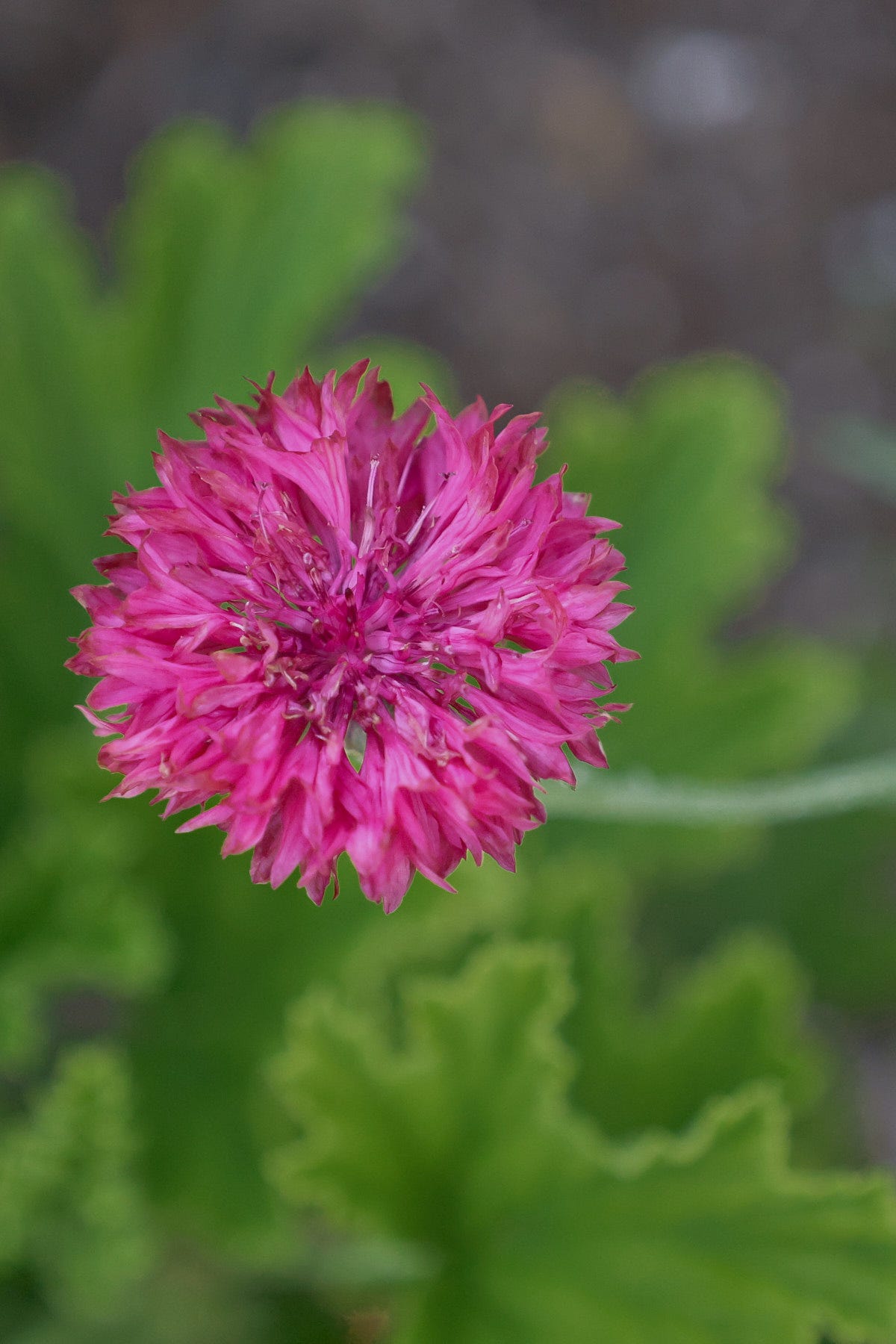
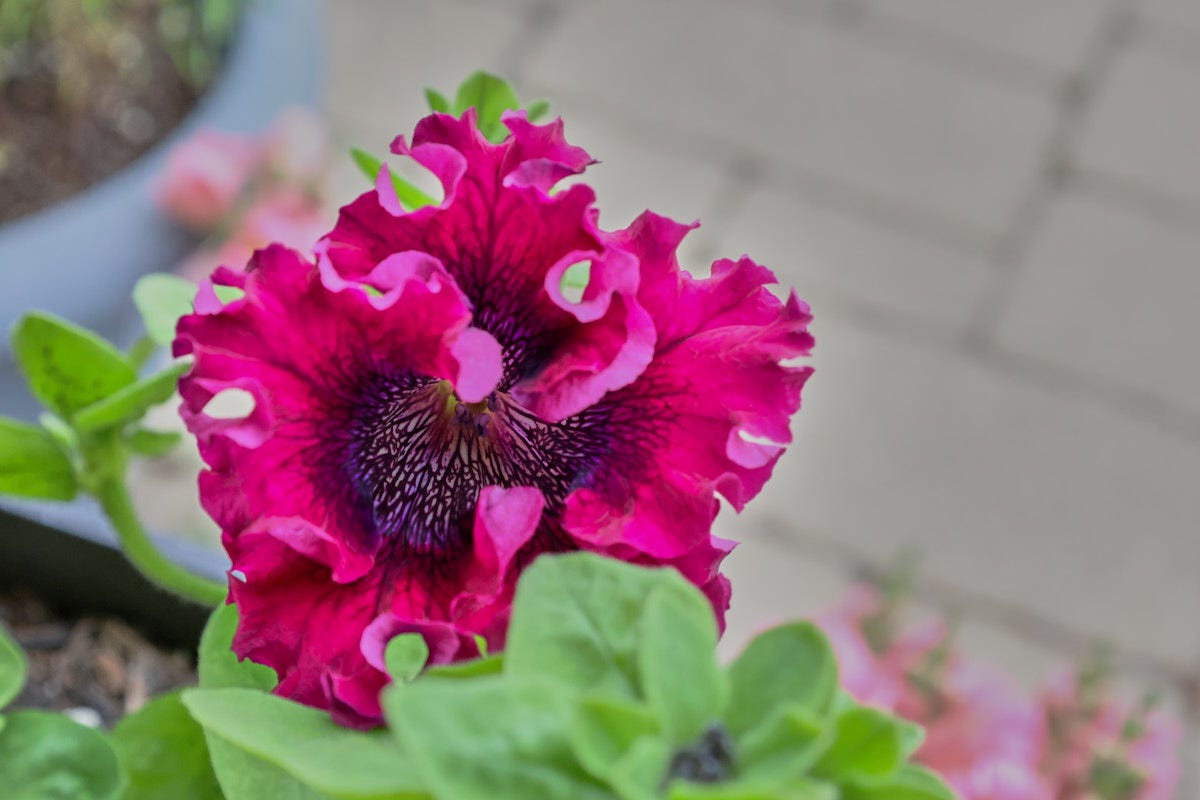
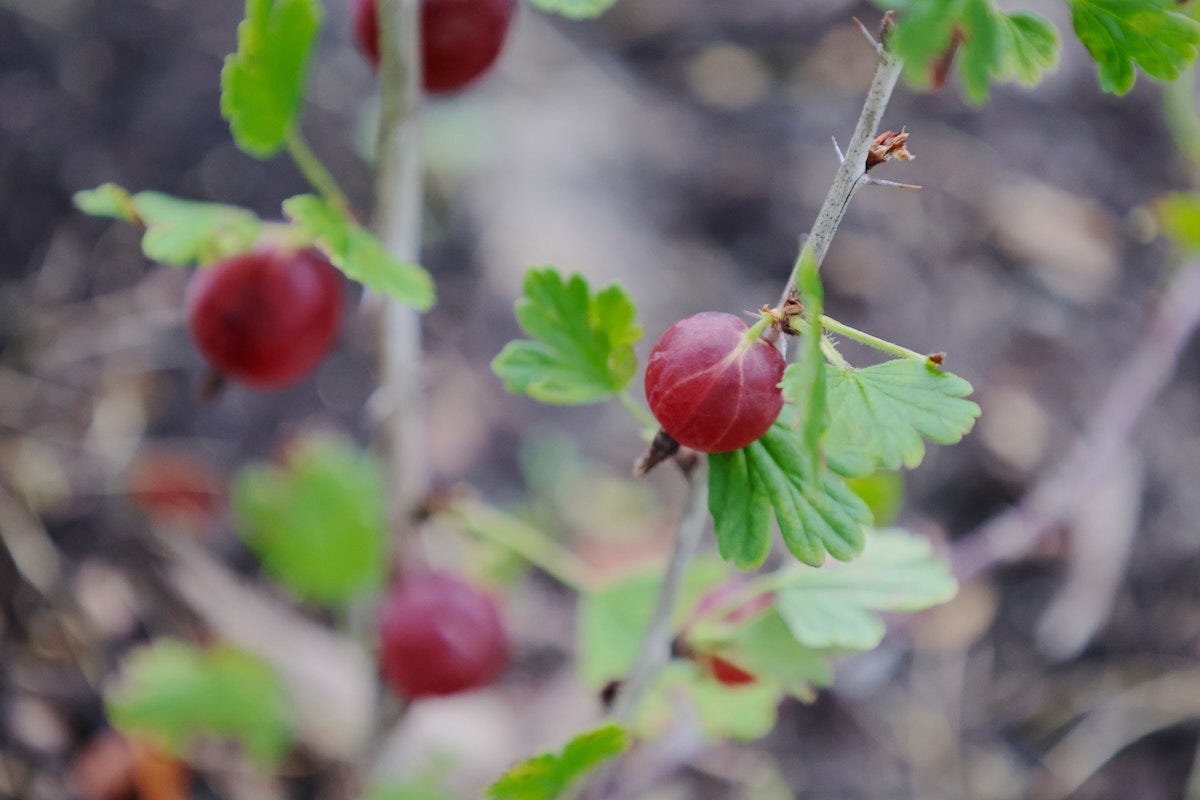
You remain a marvel!!! I love your enthusiasm and energy, combined with your mastery of the field. And I’m so interested in trying all of these different herbs and vegetables and fruits. Love you! Francis
Francis, You've just totally made my day!!! This means so much coming from such a world-seasoned culinary aficionado as you are. Every time I go out and check on my shiso, I think of you. Love you too!!!